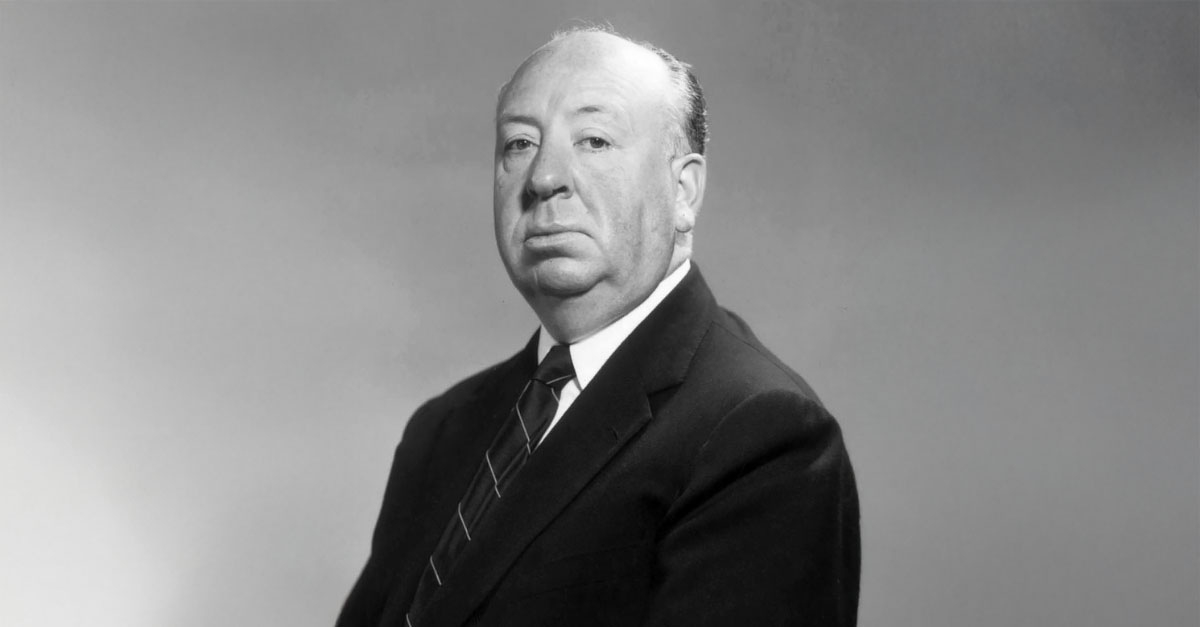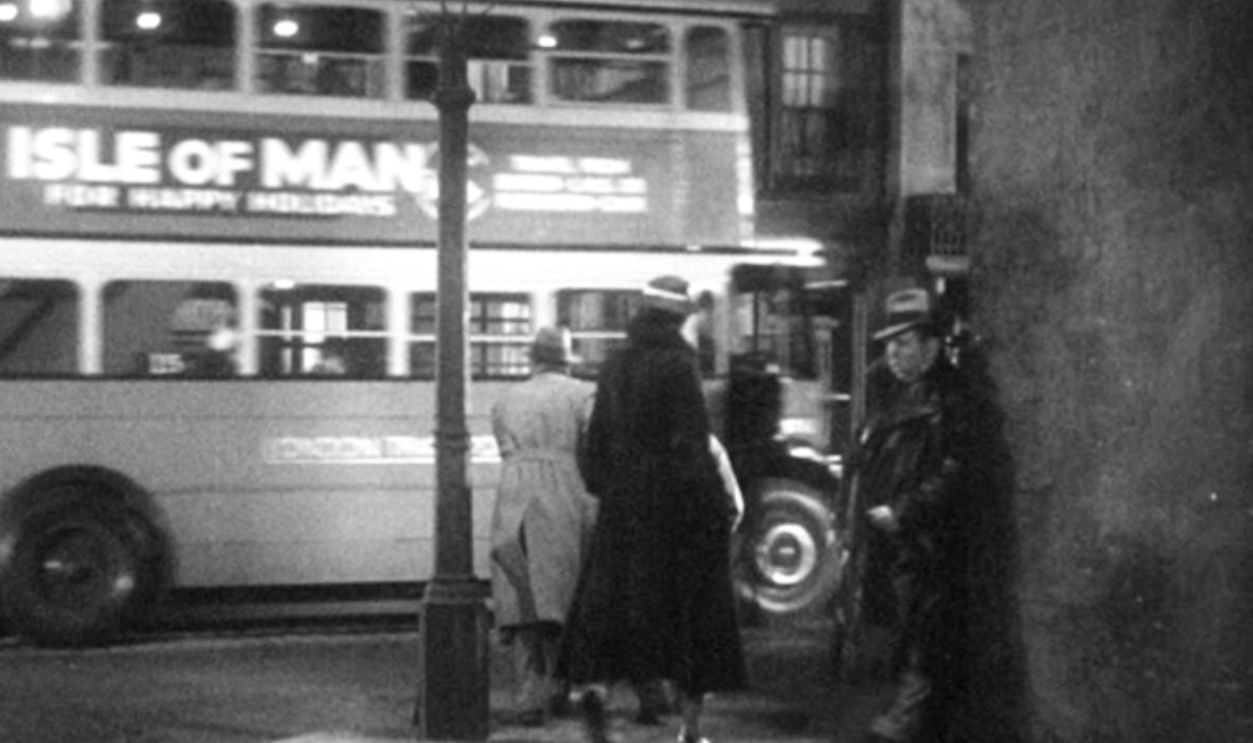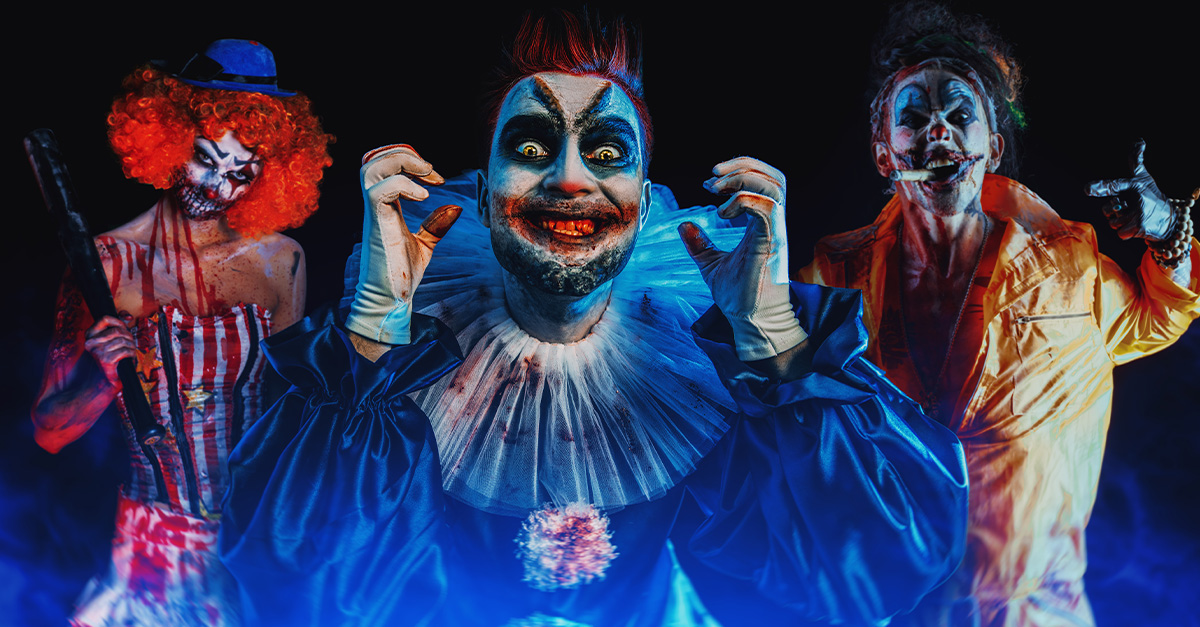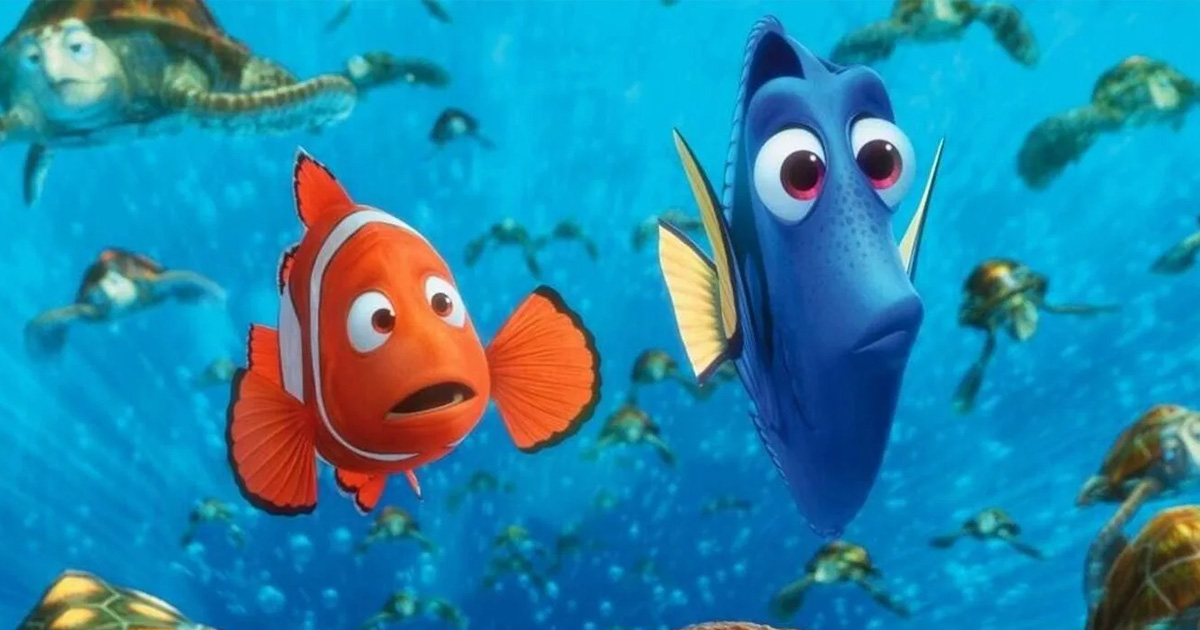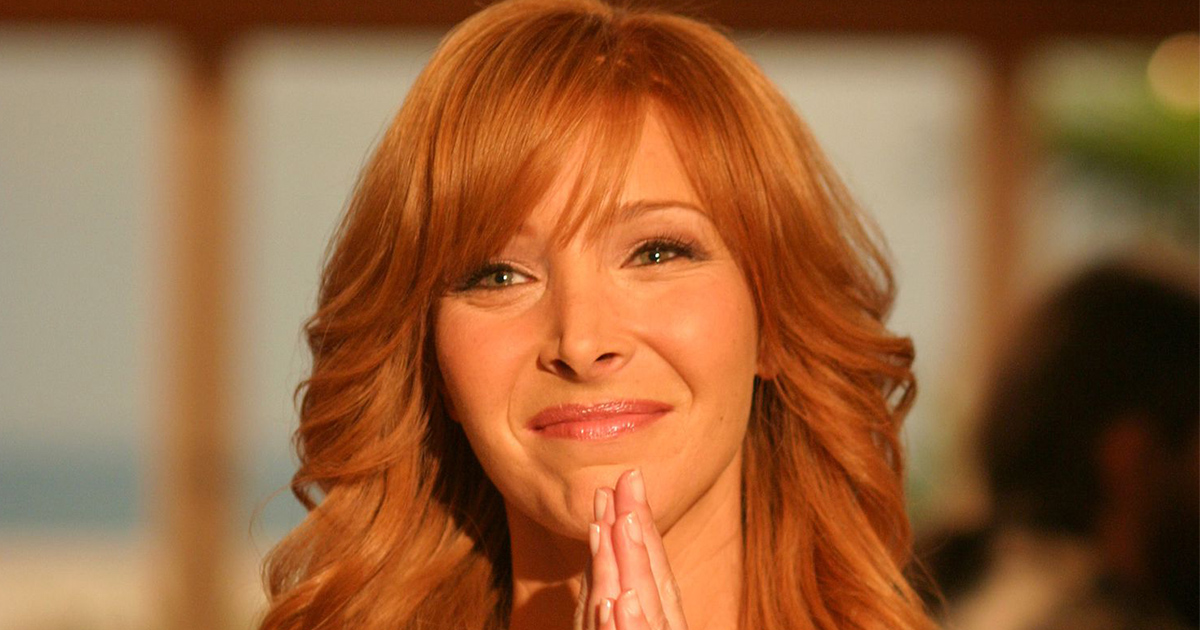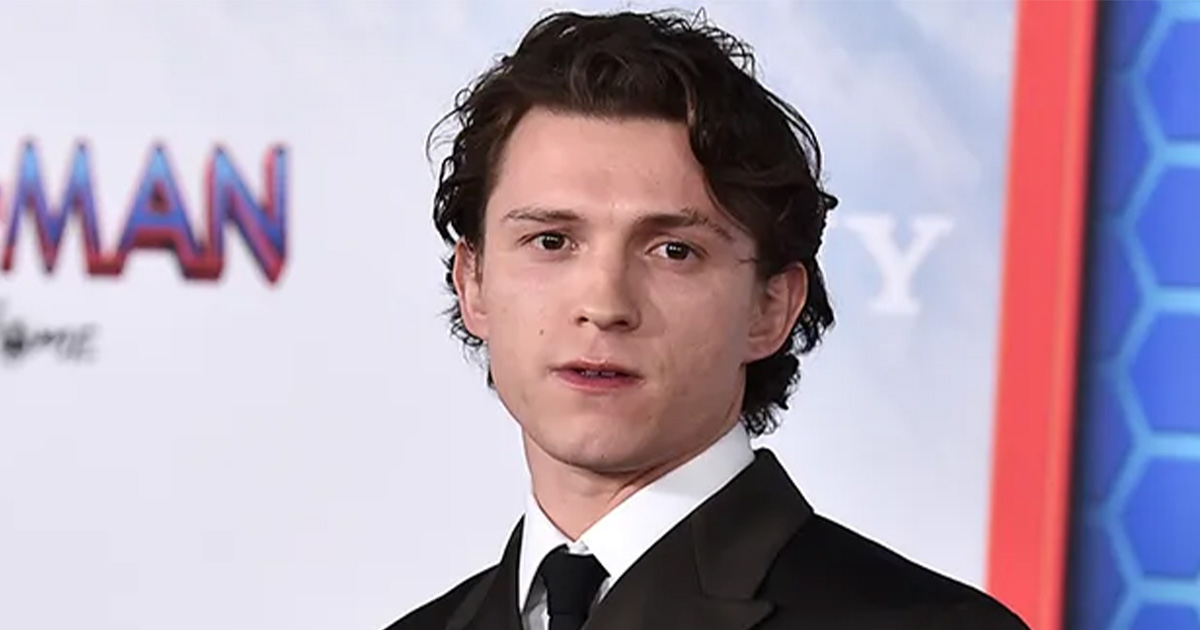Hitchcock's Cameos Still Haunt Cinema
A man with no lines, no billing, and yet, his presence shifted the mood of a scene. In over 35 films, Alfred Hitchcock inserted himself like a secret signature.

The Birds (1963)
Right at the beginning, Hitchcock exits a pet store as Tippi Hedren walks in with two white terriers trotting beside him. These were his real-life dogs, Geoffrey and Stanley. The cameo’s placement is playful, yet telling: in a film where nature revolts, the calm domestication of animals hints at order before chaos.
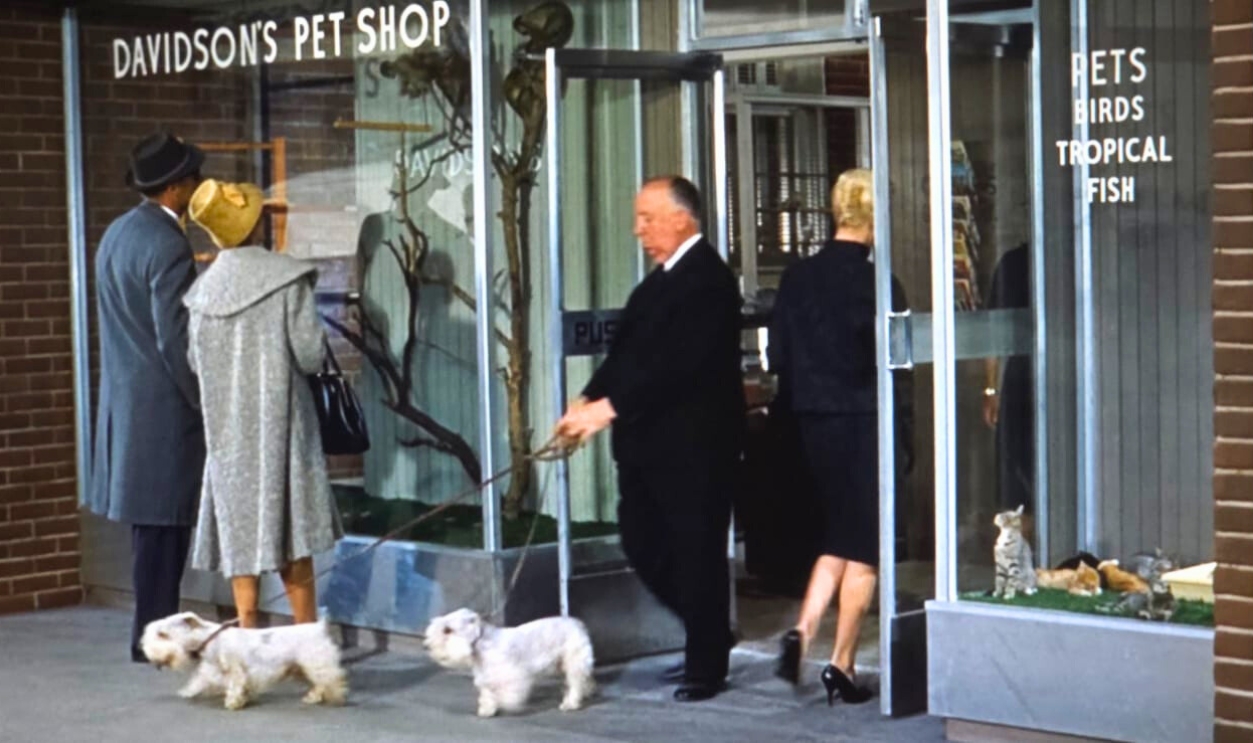 Every Alfred Hitchcock Cameo by Morgan T. Rhys
Every Alfred Hitchcock Cameo by Morgan T. Rhys
The Man Who Knew Too Much (1934)
Before audiences even settled into the tension of The Man Who Knew Too Much, Hitchcock made his presence known by casually strolling across a London street in front of a bus. It’s a quick, blink-and-you’ll-miss-it cameo, yet it marks one of the earliest examples of his evolving tradition.
The Paradine Case (1947)
At a London cafe terrace, Hitchcock is seen walking a short distance before disappearing into the crowd. In this courtroom drama focused on obsession and guilt, his presence echoes the voyeuristic tension of watching others. He simply watches, just like the audience, silently processing every secret being brought to light.
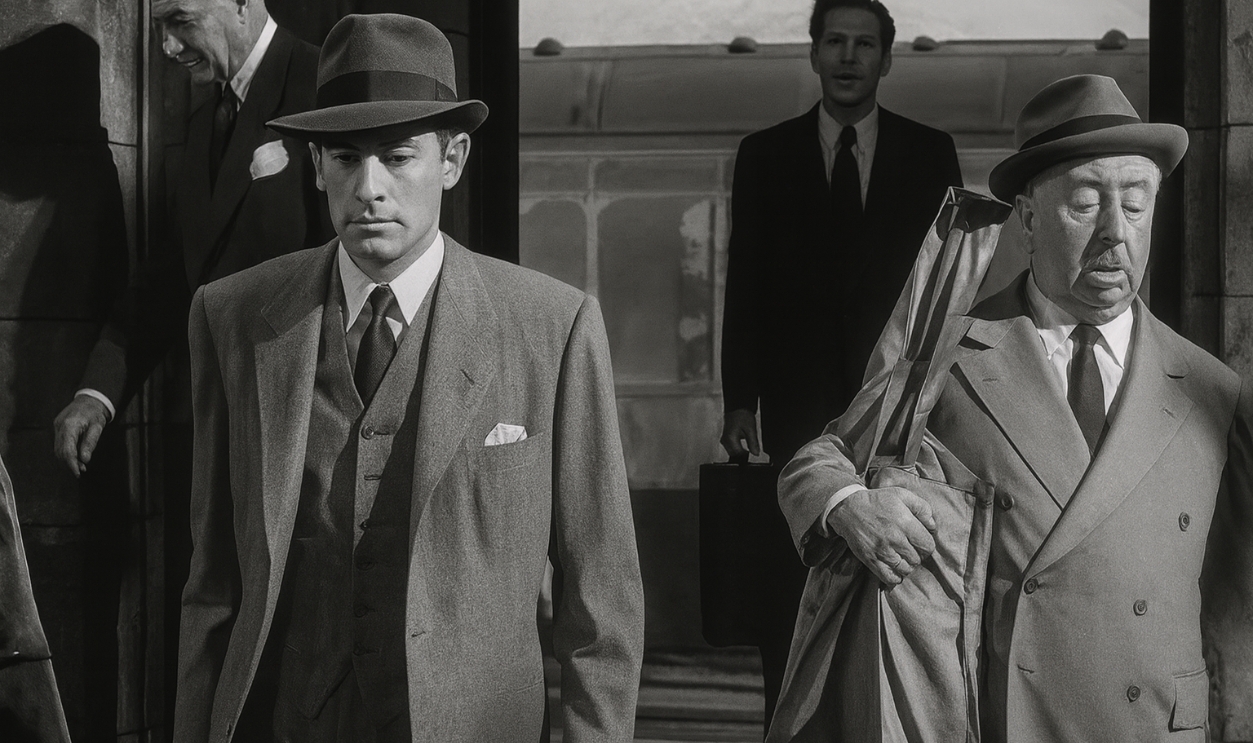 Every Alfred Hitchcock Cameo (with time stamps) by Daniel Cheetham
Every Alfred Hitchcock Cameo (with time stamps) by Daniel Cheetham
Psycho (1960)
Early in the film, Hitchcock stands outside Marion Crane’s office, wearing a cowboy hat and glancing into the camera. This cameo happens quickly but memorably, before the narrative takes its dark turn. Positioned in daylight, his presence quietly contrasts with the isolation and dread soon to take center stage.
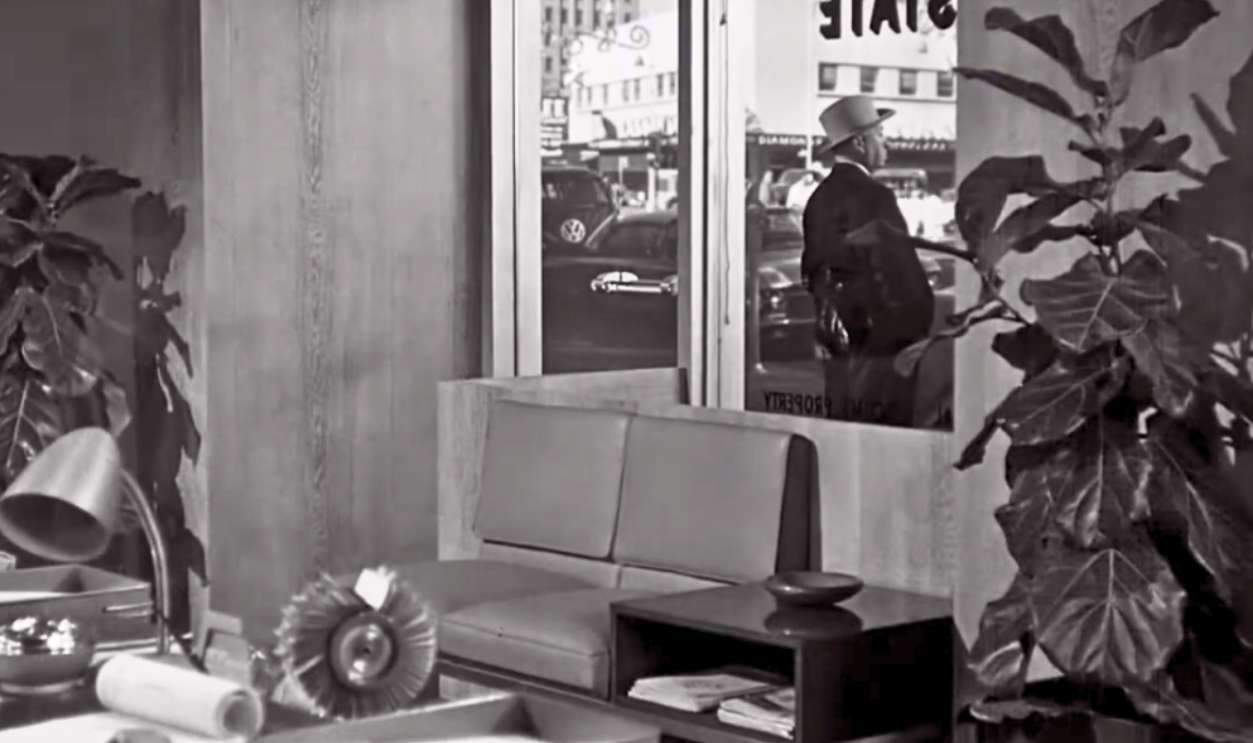 Every Alfred Hitchcock Cameo (with time stamps) by Daniel Cheetham
Every Alfred Hitchcock Cameo (with time stamps) by Daniel Cheetham
The Wrong Man (1956)
Unique among Hitchcock’s appearances, he breaks the fourth wall. Standing in shadow, he introduces the story directly to the audience. The Wrong Man is based on a true case of mistaken identity, and this solemn cameo underscores its realism. Here, Hitchcock declares part of the emotional weight.
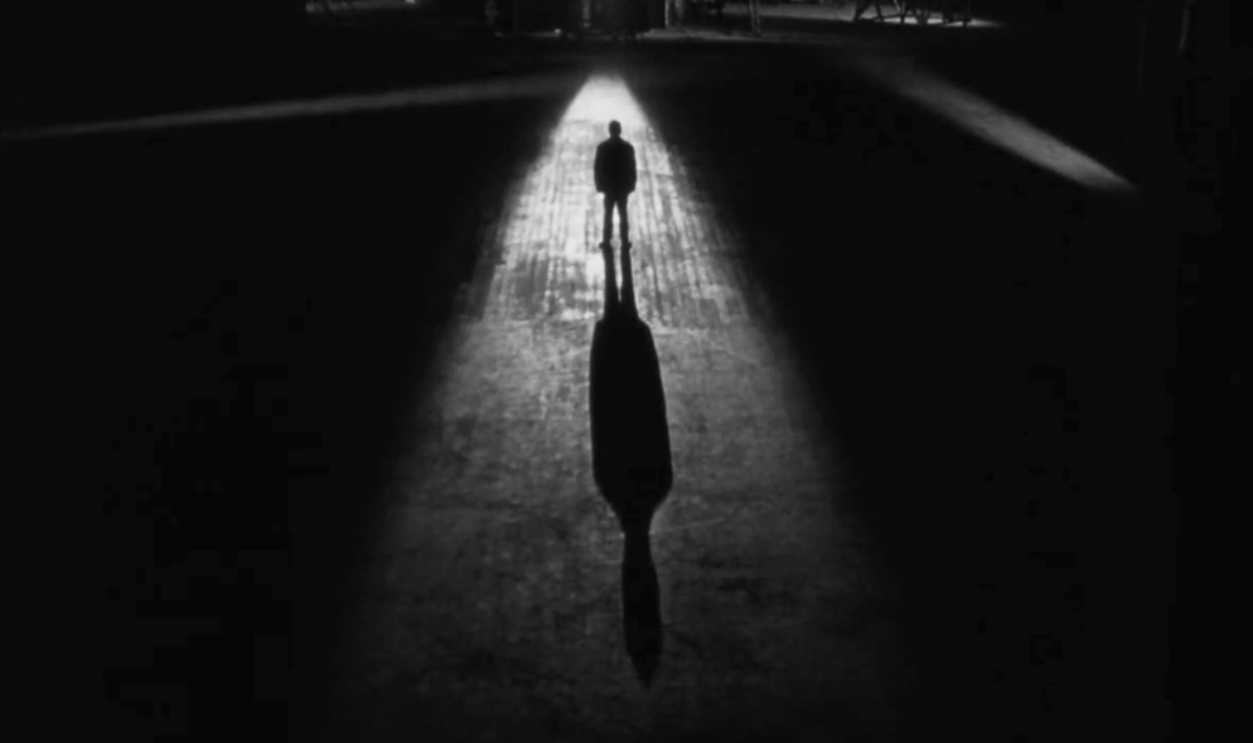 Every Alfred Hitchcock Cameo (with time stamps) by Daniel Cheetham
Every Alfred Hitchcock Cameo (with time stamps) by Daniel Cheetham
I Confess (1953)
Near a Quebec church, Hitchcock quietly walks past in a long shot, barely distinguishable from the public. The film deals with silence and inner torment, and his faceless cameo aligns with its restrained tone. Here, he’s not a distraction but a shadow, observing the moral complexities he’s created without announcing himself.
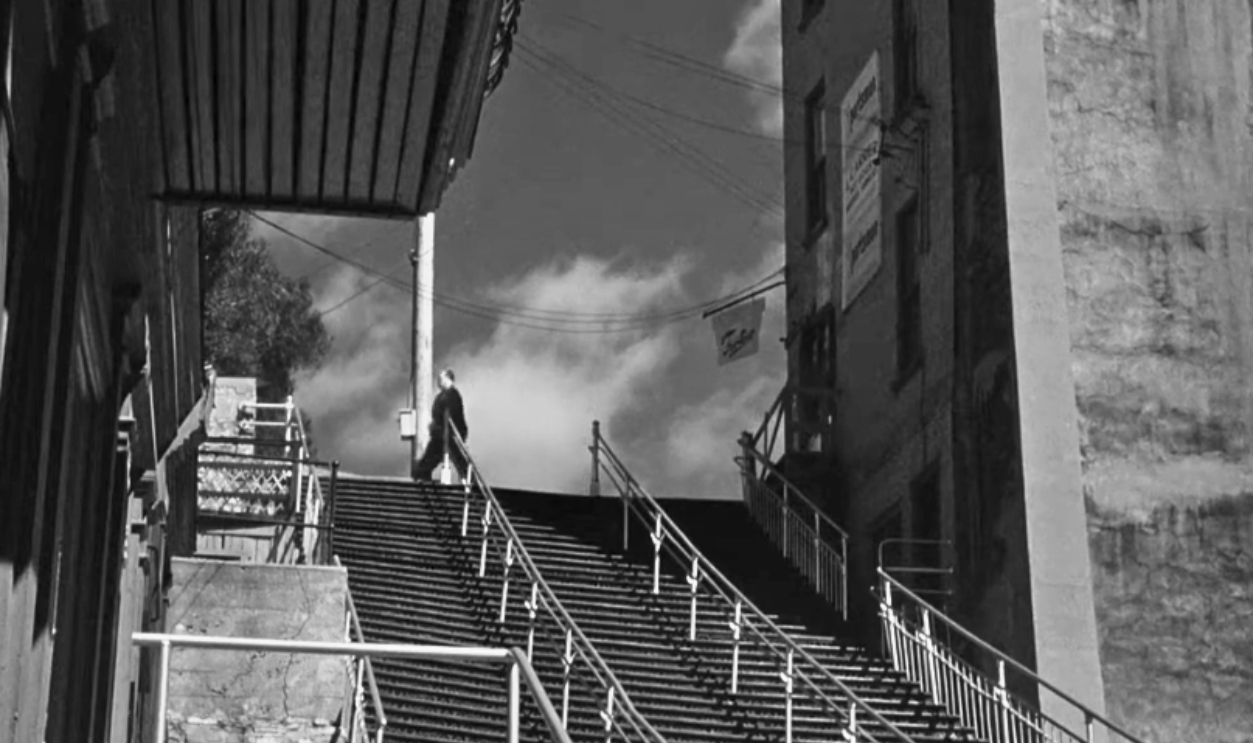 Every Alfred Hitchcock Cameo (with time stamps) by Daniel Cheetham
Every Alfred Hitchcock Cameo (with time stamps) by Daniel Cheetham
The Man Who Knew Too Much (1956)
During a bustling sequence outside the Royal Albert Hall, Hitchcock stands among the crowd, facing away. His position among onlookers blurs the line between witness and orchestrator of the suspense. This is the second movie he made with the same name, but the plot differs from the original one.
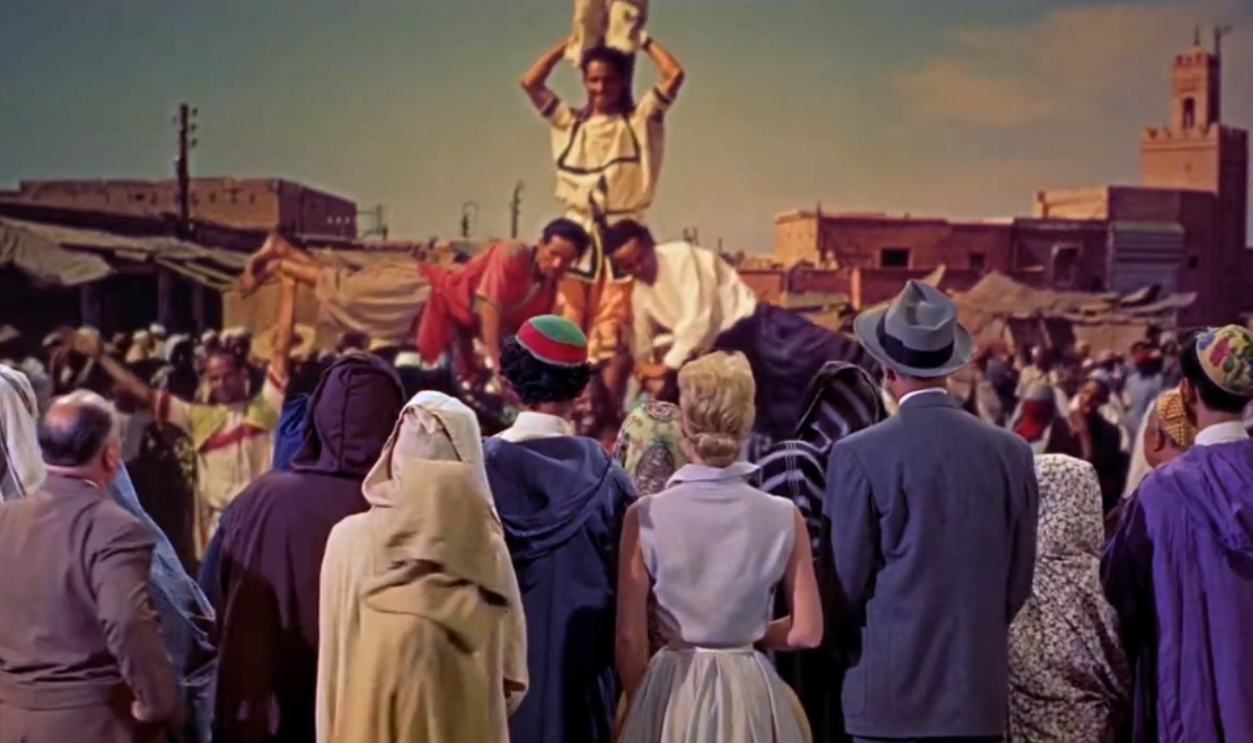 Every Alfred Hitchcock Cameo (with time stamps) by Daniel Cheetham
Every Alfred Hitchcock Cameo (with time stamps) by Daniel Cheetham
Vertigo (1958)
In a San Francisco street, Hitchcock walks past Gavin Elster’s shipyard office, carrying a trumpet case. His brief passage parallels the story’s obsessive gaze. Though fleeting, the cameo occurs before the spiral begins, subtly adding him to the web of psychological distortion that follows in a movie starring Kim Novak and James Stewart.
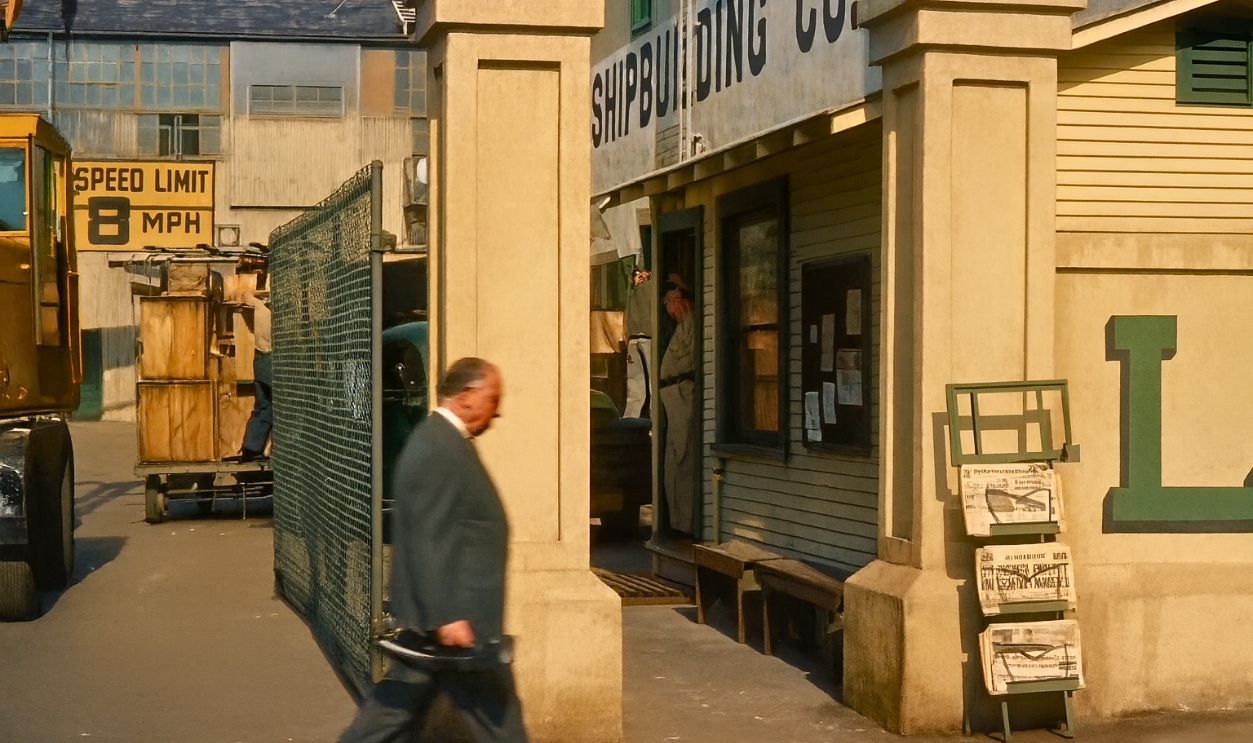 Every Alfred Hitchcock Cameo (with time stamps) by Daniel Cheetham
Every Alfred Hitchcock Cameo (with time stamps) by Daniel Cheetham
Marnie (1964)
As Marnie walks down a hotel corridor, Hitchcock pauses to look directly at her and at us. Occurring just five minutes in, this uncredited role feels intentional, even confrontational. It breaks narrative distance subtly, which is fitting for a film obsessed with psychological intrusion and control. He’s peering inward and makes us wonder.
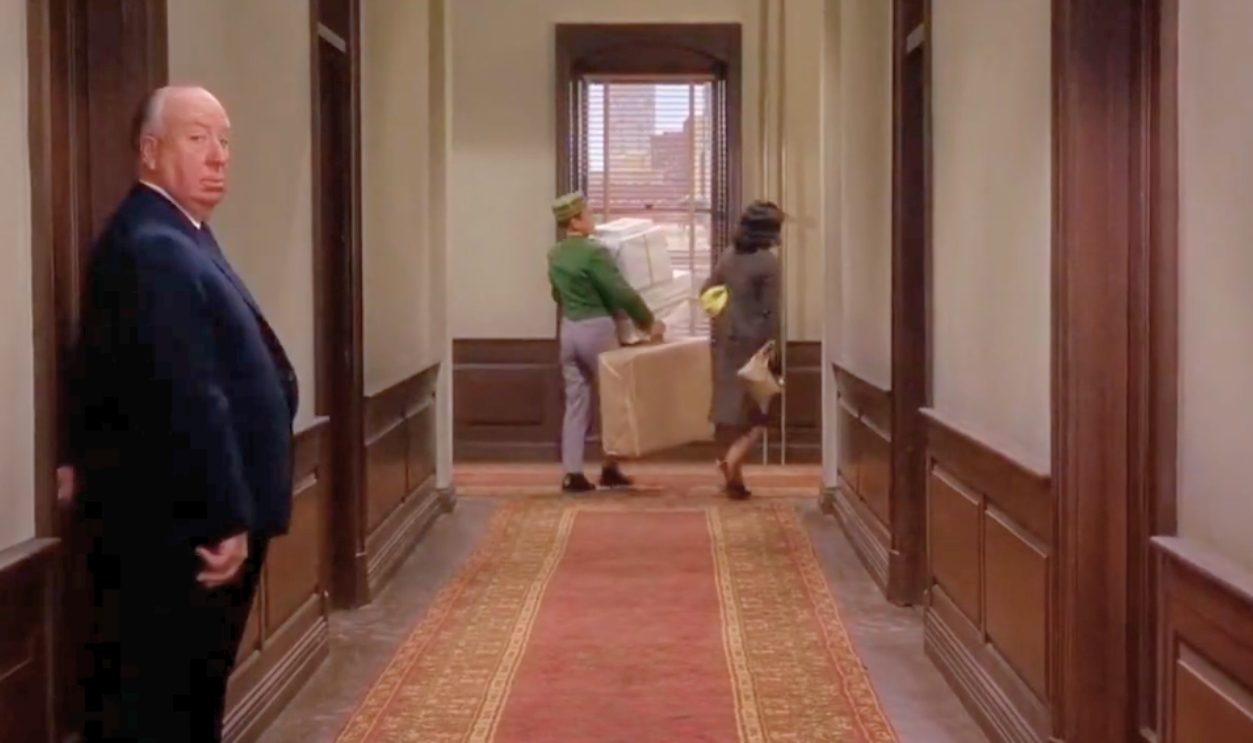 Every Alfred Hitchcock Cameo (with time stamps) by Daniel Cheetham
Every Alfred Hitchcock Cameo (with time stamps) by Daniel Cheetham
Rear Window (1954)
From across the courtyard, Hitchcock is briefly seen adjusting a clock in the songwriter’s apartment. The perspective is telling—spied upon by both protagonist and viewer. Within a film defined by observation and distance, his understated presence reinforces its central motif: that even the most dull movements can carry unseen consequences.
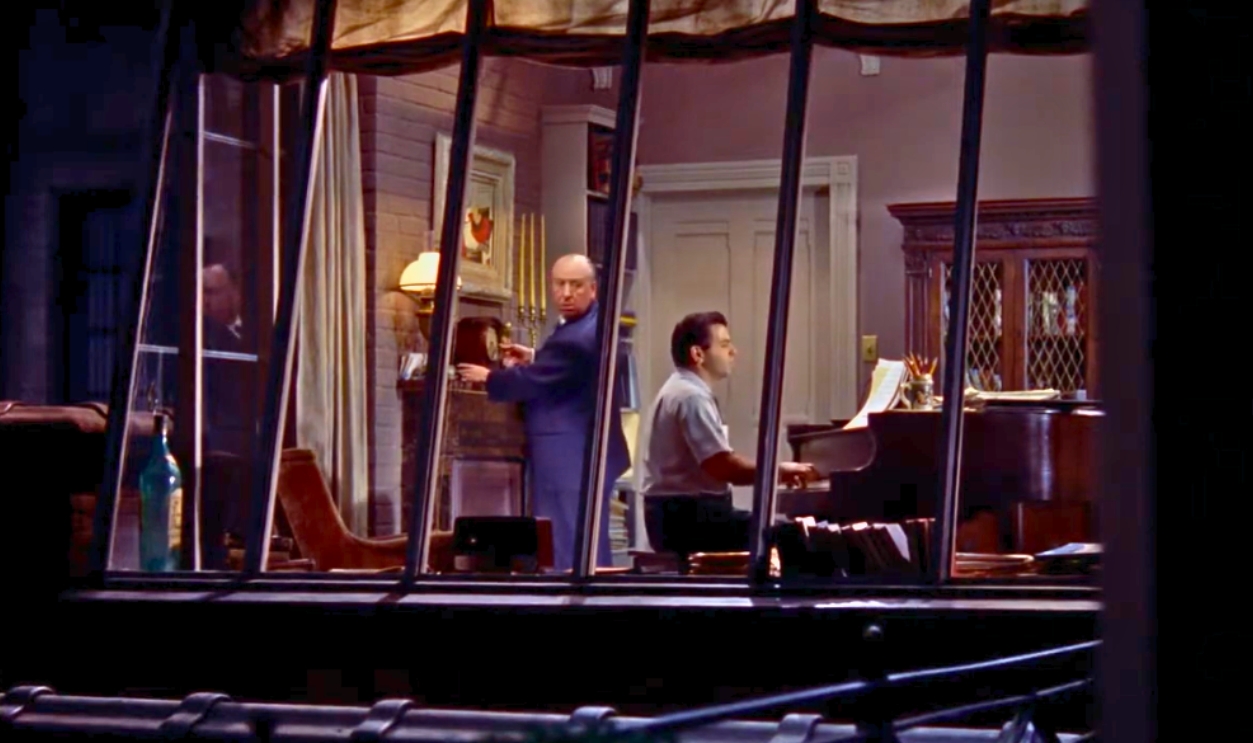 Every Alfred Hitchcock Cameo (with time stamps) by Daniel Cheetham
Every Alfred Hitchcock Cameo (with time stamps) by Daniel Cheetham
Strangers On A Train (1951)
Carrying a cumbersome double bass, Hitchcock boards a train behind the lead character. It’s one of his wittier cameos, especially in a film built on the burden of secrets and deadly exchanges. The prop doubles as a sight gag and metaphor, as he could be hiding something sinister just out of view.
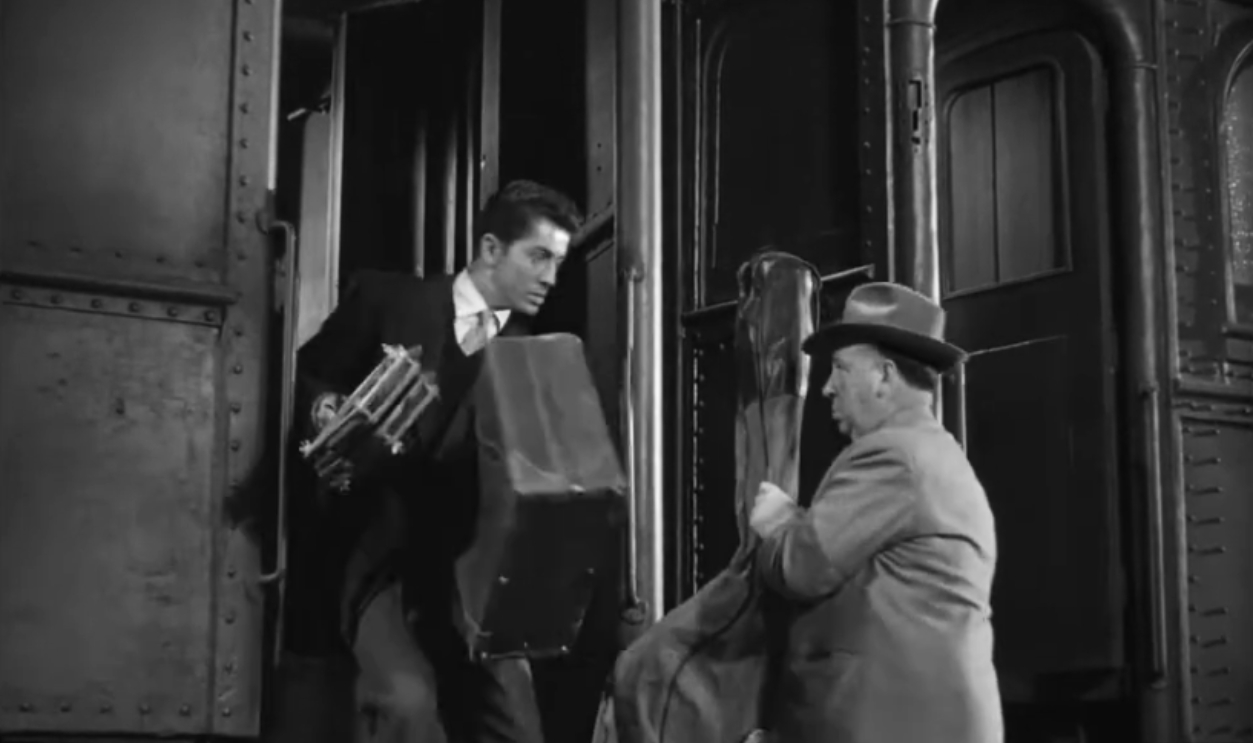 Every Alfred Hitchcock Cameo (with time stamps) by Daniel Cheetham
Every Alfred Hitchcock Cameo (with time stamps) by Daniel Cheetham
The Trouble With Harry (1955)
A hillside painter becomes Hitchcock’s anchor in this offbeat murder comedy. As he pauses briefly behind the easel to inspect the canvas, his unhurried presence adds to the surreal calm. The scene reflects the film’s dry tone, where corpses draw shrugs instead of screams, and the director strolls by like a neighbor.
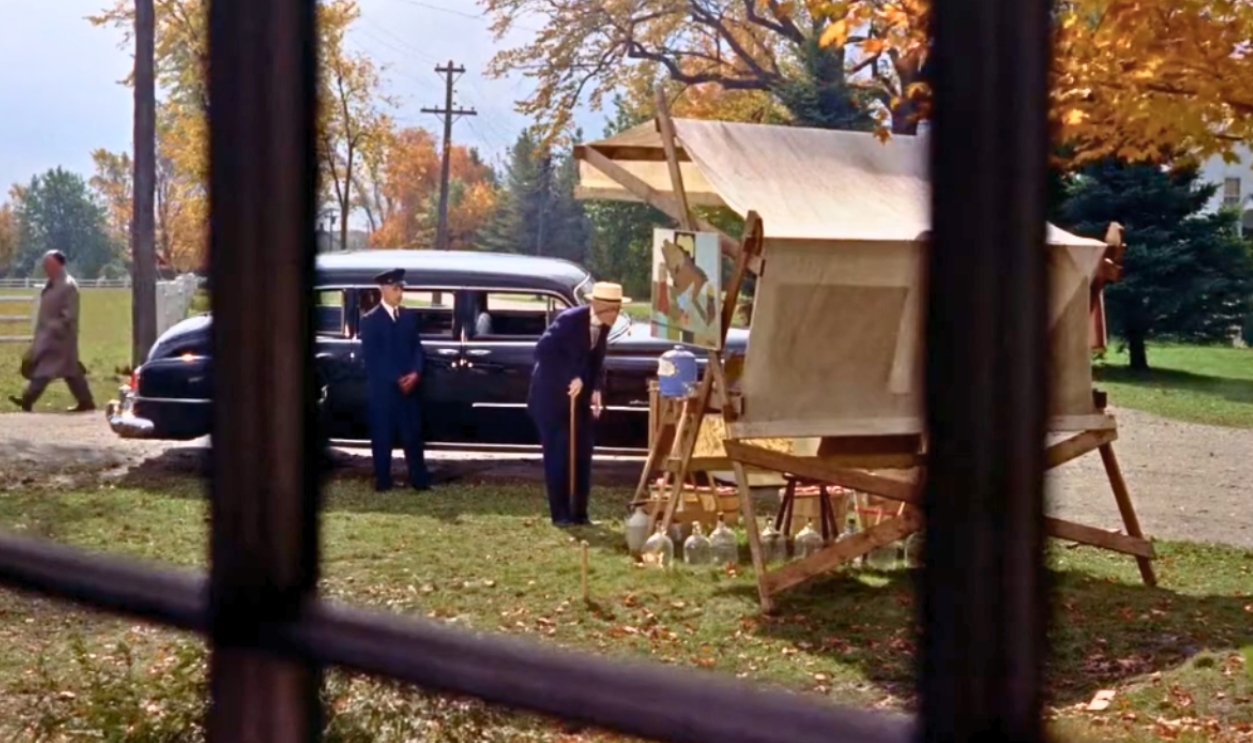 Every Alfred Hitchcock Cameo (with time stamps) by Daniel Cheetham
Every Alfred Hitchcock Cameo (with time stamps) by Daniel Cheetham
The Lodger: A Story Of The London Fog (1927)
Hitchcock’s first known cameo emerged from necessity. In The Lodger, he appears in a newsroom, seated with his back to the camera. Lacking an available extra, he stepped in—unintentionally beginning a signature tradition. This silent thriller, centered on a Jack the Ripper-style killer, marked his directorial rise and first on-screen signature.
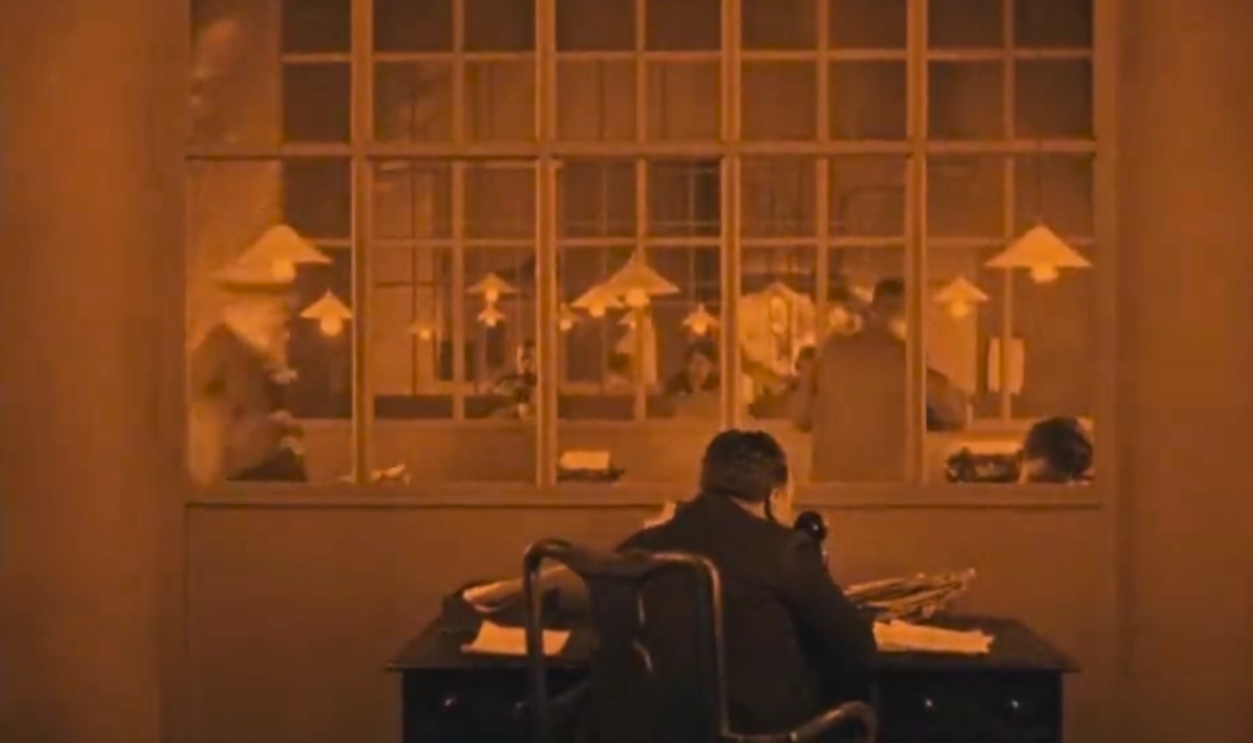 Every Alfred Hitchcock Cameo (with time stamps) by Daniel Cheetham
Every Alfred Hitchcock Cameo (with time stamps) by Daniel Cheetham
Shadow Of A Doubt (1943)
Seated on a train, Hitchcock quietly joins a game of bridge with fellow passengers. The scene appears casual, yet it’s placed in a film where evil hides behind charm. His presence subtly mirrors the story’s premise: how ordinary settings and familiar faces can conceal unsettling truths waiting to surface unexpectedly.
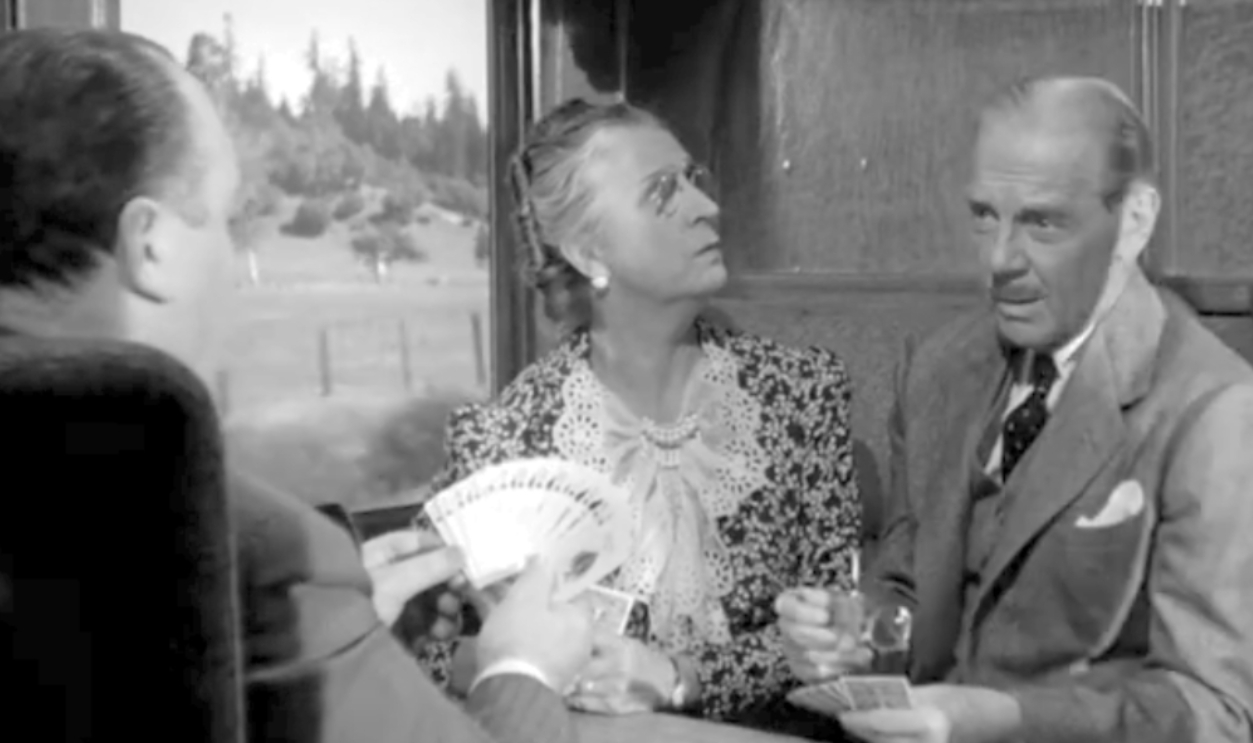 Every Alfred Hitchcock Cameo (with time stamps) by Daniel Cheetham
Every Alfred Hitchcock Cameo (with time stamps) by Daniel Cheetham
Easy Virtue (1928)
In Easy Virtue, Hitchcock can be spotted walking across a tennis court during an early sequence. The shot is distant, with his face obscured in one of his most elusive cameos. The film, a melodrama of scandal and judgment, explores themes of social ostracism, which are reflected subtly in his peripheral placement.
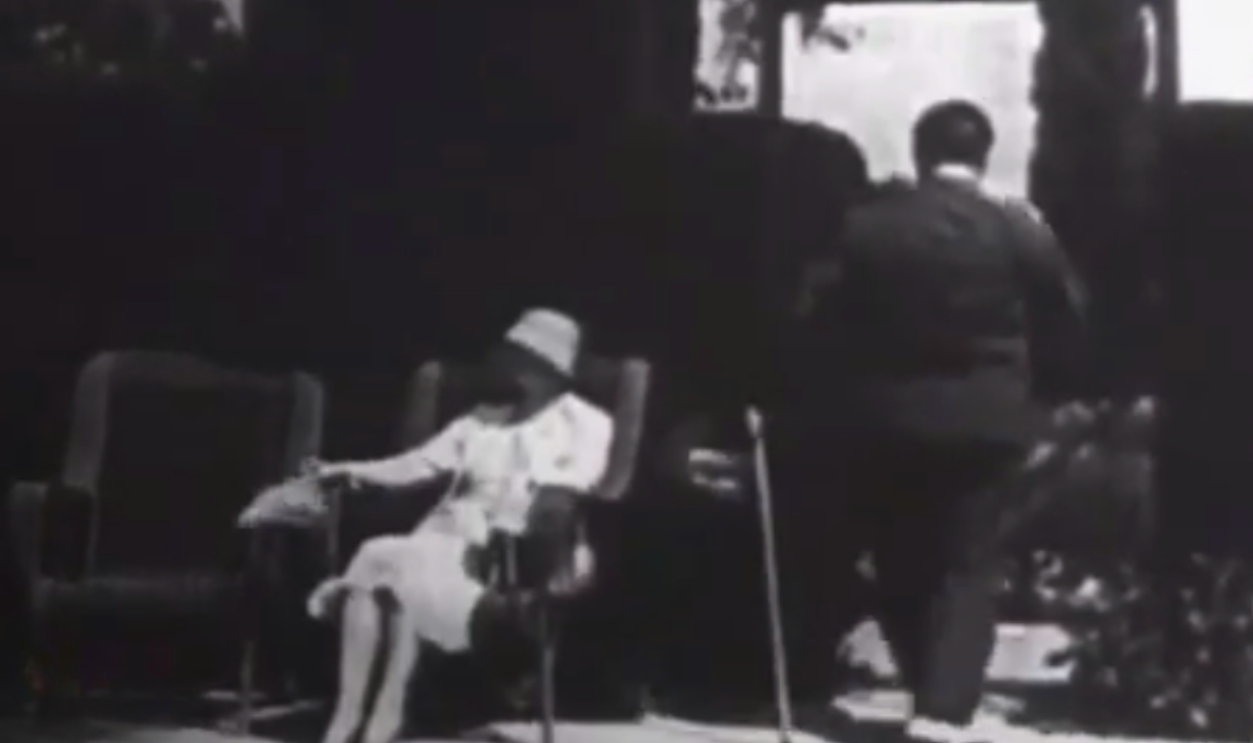 All ALFRED HITCHCOCK CAMEOS in his Movies by Adyfilk
All ALFRED HITCHCOCK CAMEOS in his Movies by Adyfilk
Stage Fright (1950)
Within the opening minutes, Hitchcock glances sharply at Jane Wyman’s character as she rushes past him on a London street. His direct acknowledgment breaks the illusion briefly. Stage Fright thrives on deception and storytelling bias, and this knowing glance is a visual wink to the audience’s role as selective observers.
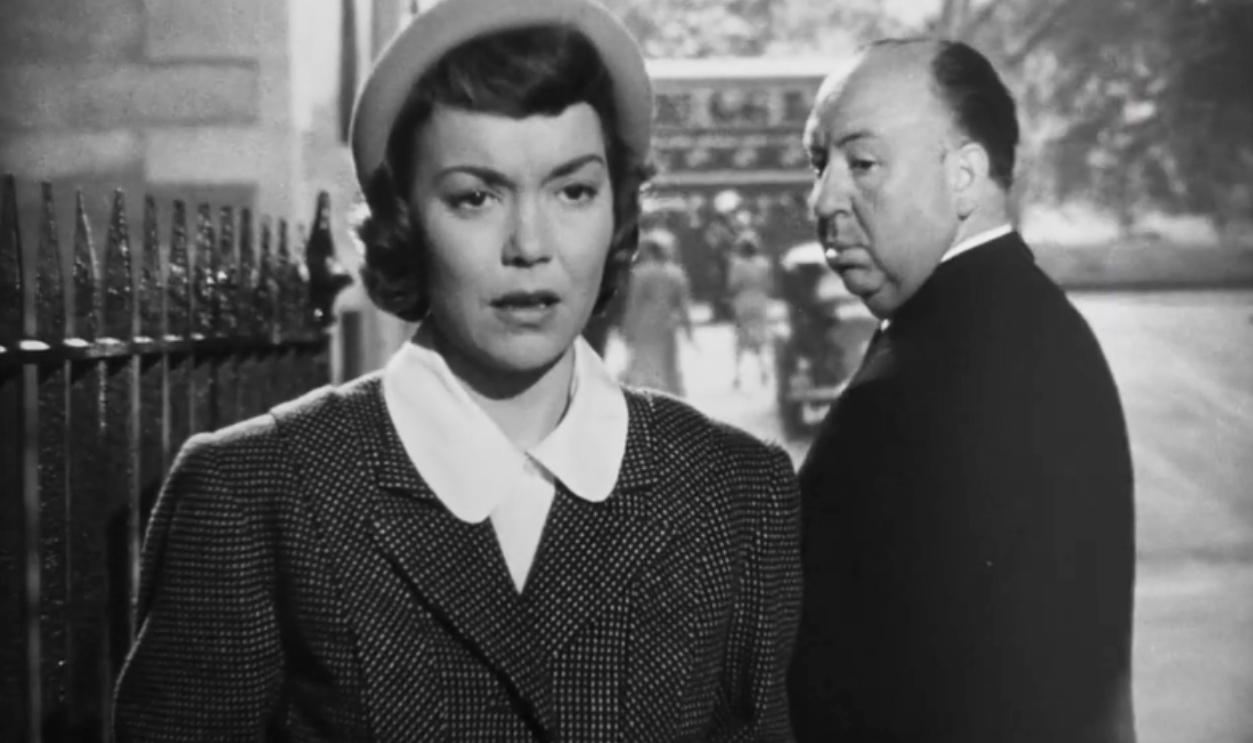 All ALFRED HITCHCOCK CAMEOS in his Movies by Adyfilk
All ALFRED HITCHCOCK CAMEOS in his Movies by Adyfilk
Blackmail (1929)
Regarded as one of his more extended acting scenes, Hitchcock appears seated on a London Underground train in Blackmail, being pestered by a child. As the United Kingdom’s first full-length “talkie,” this film was groundbreaking. His amused, silent annoyance plays well against the rising tension of the psychological thriller’s central plot.
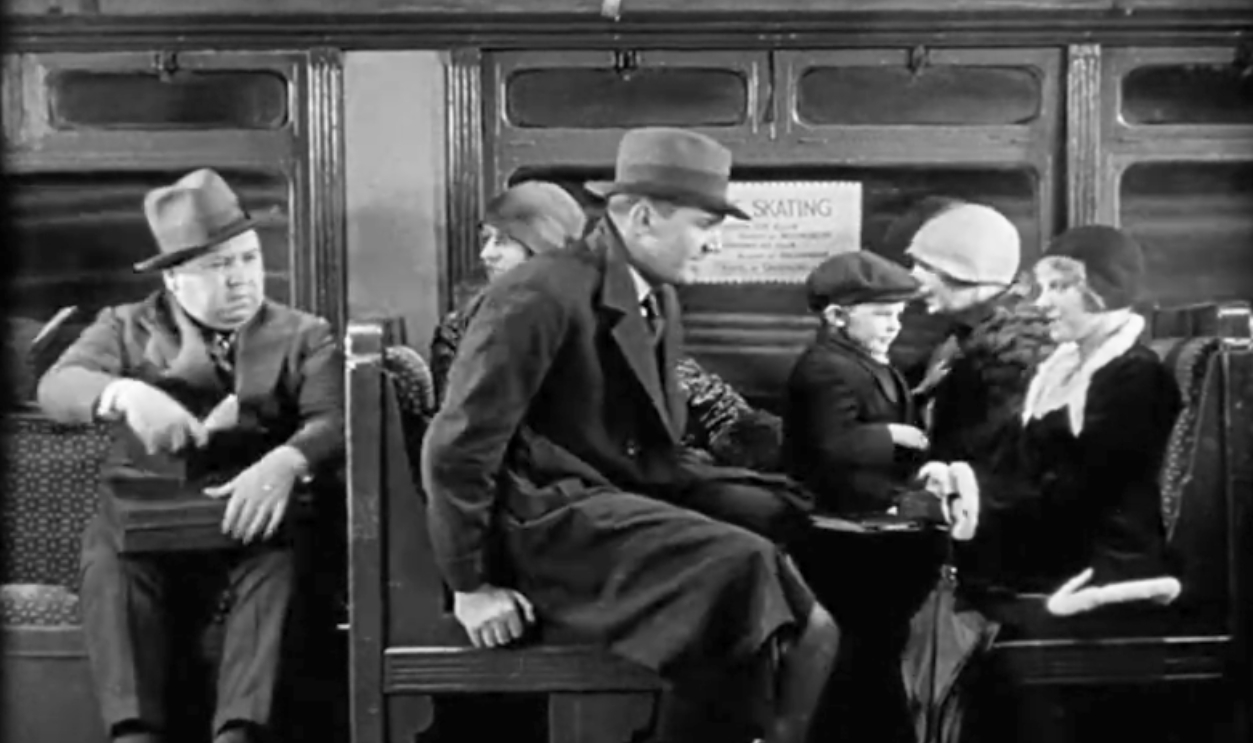 Every Alfred Hitchcock Cameo (with time stamps) by Daniel Cheetham
Every Alfred Hitchcock Cameo (with time stamps) by Daniel Cheetham
Foreign Correspondent (1940)
About 13 minutes into this wartime thriller, Hitchcock appears outside a London hotel, casually reading a newspaper. The shot is fast but deliberate. His placement within this tale of press propaganda and international danger sheds light on the very themes he subtly underscores: observation and the precarious balance between reality and manipulation.
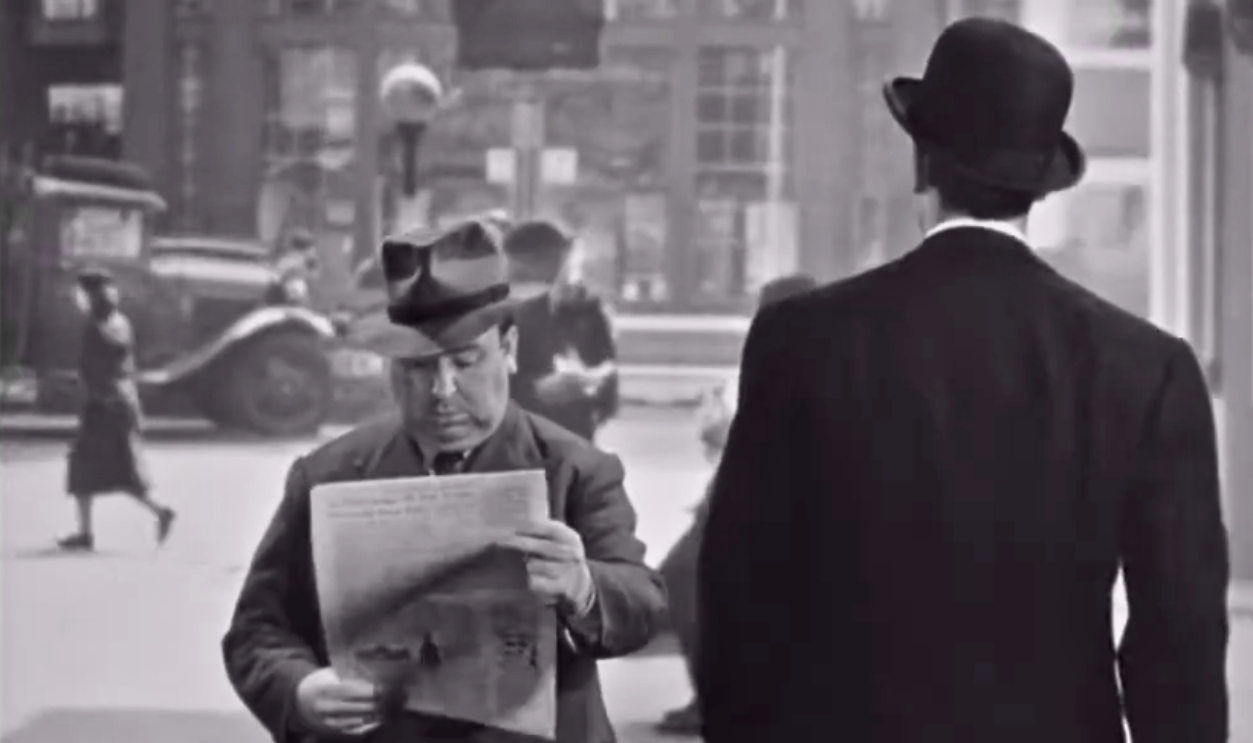 Every Alfred Hitchcock Cameo (with time stamps) by Daniel Cheetham
Every Alfred Hitchcock Cameo (with time stamps) by Daniel Cheetham
Lifeboat (1944)
Confined to a single lifeboat setting, Lifeboat posed a challenge, but Hitchcock solved it ingeniously. He appears in a newspaper ad for “Reduco Obesity Slayer”. This meta moment showcases his humor and adaptability. It’s the only cameo not filmed live, yet it remains one of his most creative and contextually aware.
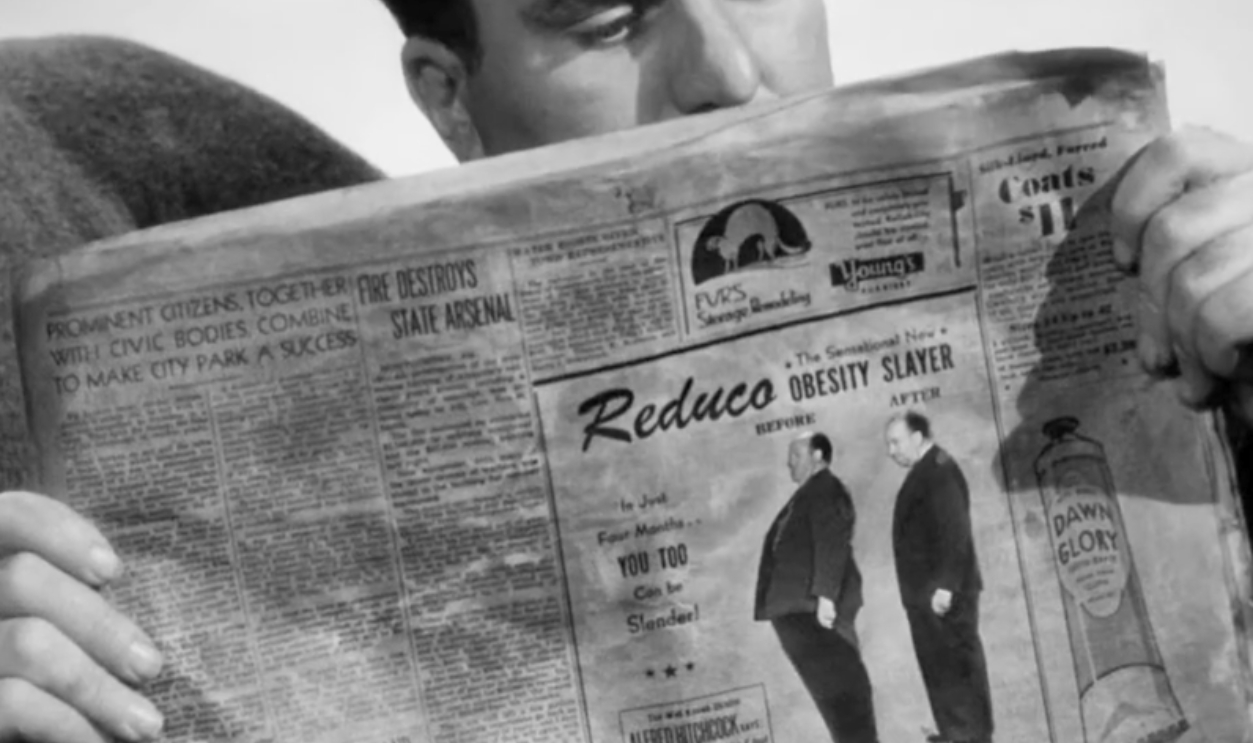 Every Alfred Hitchcock Cameo (with time stamps) by Daniel Cheetham
Every Alfred Hitchcock Cameo (with time stamps) by Daniel Cheetham
The 39 Steps (1935)
One of Hitchcock’s most beloved early thrillers, The 39 Steps, is also home to a subtle yet purposeful cameo. Just a few minutes into the film, he strolls across the frame and nonchalantly tosses a cigarette box on the street. It’s a small, easily overlooked gesture, but it’s his way of signaling the beginning of a chase.
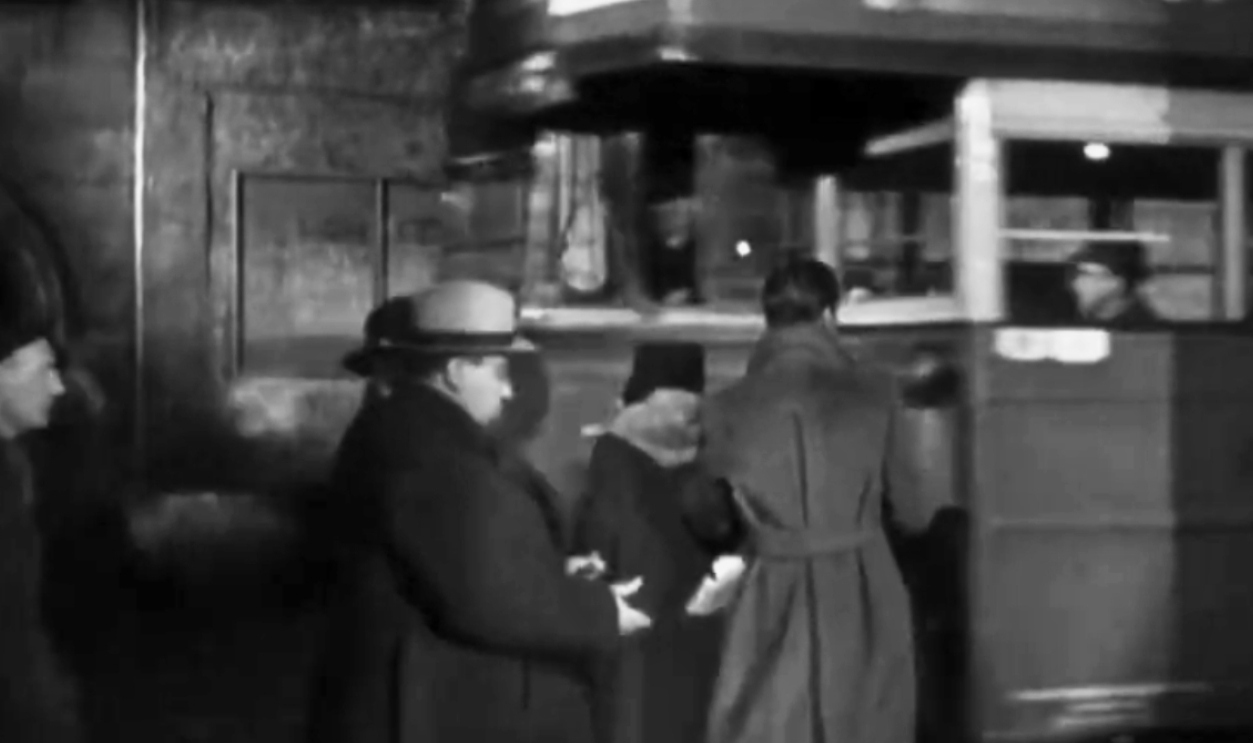 Every Alfred Hitchcock Cameo (with time stamps) by Daniel Cheetham
Every Alfred Hitchcock Cameo (with time stamps) by Daniel Cheetham
The 39 Steps (1935) (Cont.)
Many consider this movie a masterclass in paranoia and coded messages, and his moment of littering may feel mundane. However, it mirrors the idea of misplaced clues and misdirection. Even Hitchcock’s smallest actions speak to the psychological precision of his storytelling.
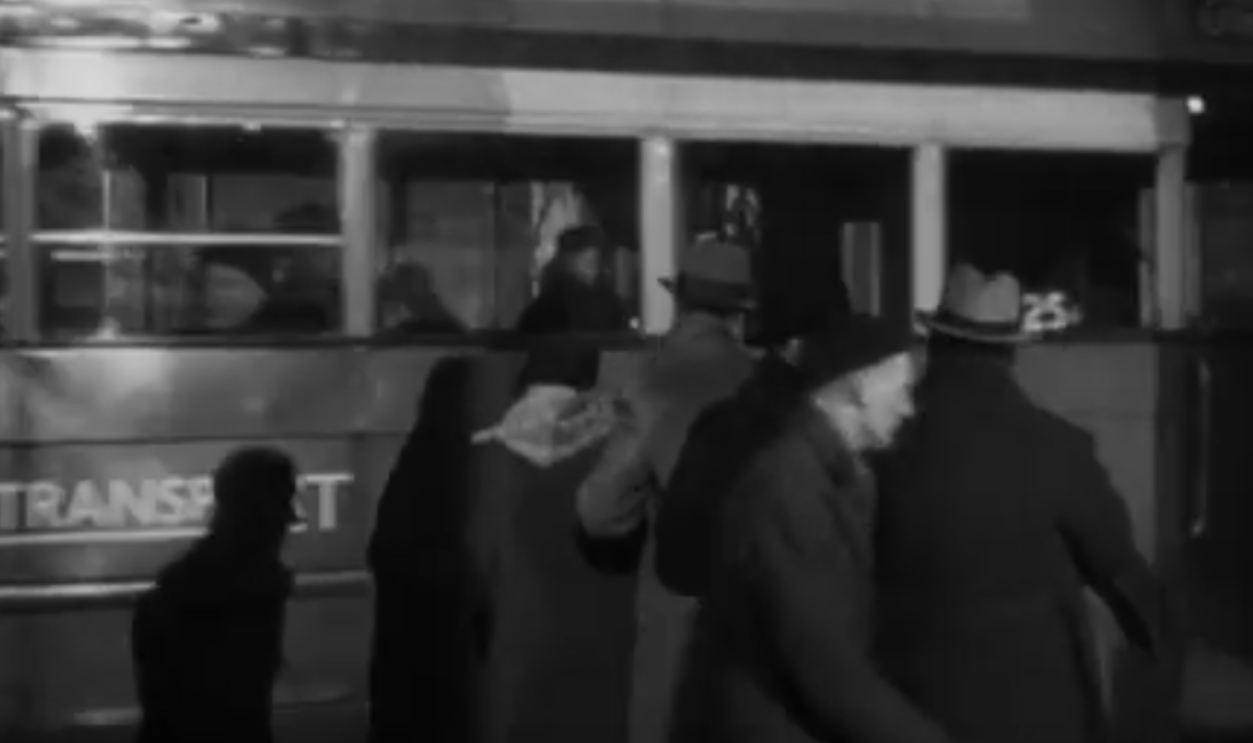 All ALFRED HITCHCOCK CAMEOS in his Movies by Adyfilk
All ALFRED HITCHCOCK CAMEOS in his Movies by Adyfilk
Murder! (1930)
In Murder! Hitchcock makes a quick appearance by walking past a murder scene with another man. The camera lingers long enough to show his face in one of his clearer early cameos. This courtroom mystery digs into themes of guilt and doubt, and his bystander role aligns symbolically with the film’s moral ambiguity.
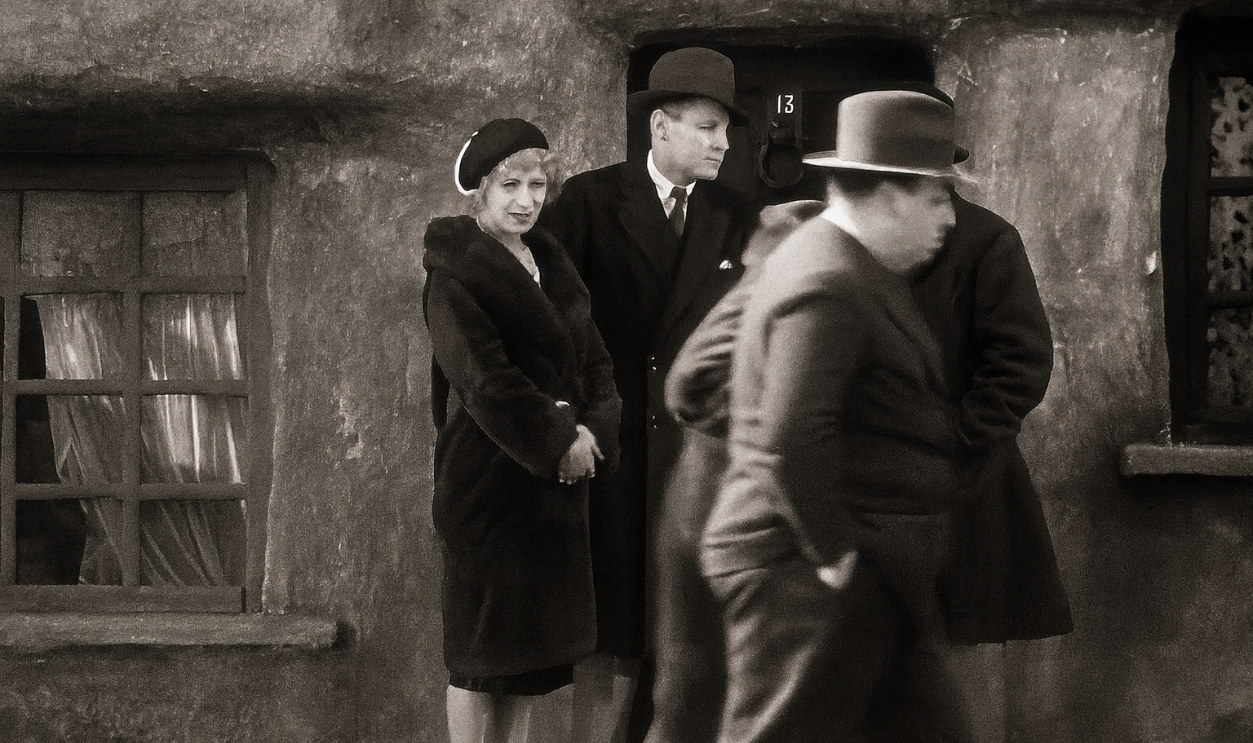 Every Alfred Hitchcock Cameo (with time stamps) by Daniel Cheetham
Every Alfred Hitchcock Cameo (with time stamps) by Daniel Cheetham
Spellbound (1945)
He strolls through a hotel lobby, carrying a violin case, completely unnoticed. The choice of prop is ironic as he’s no musician and aligns with Spellbound’s exploration of mistaken identity and psychological layers. It’s a brief presence, yet symbolically apt in a film steeped in Freudian symbolism and subconscious conflict.
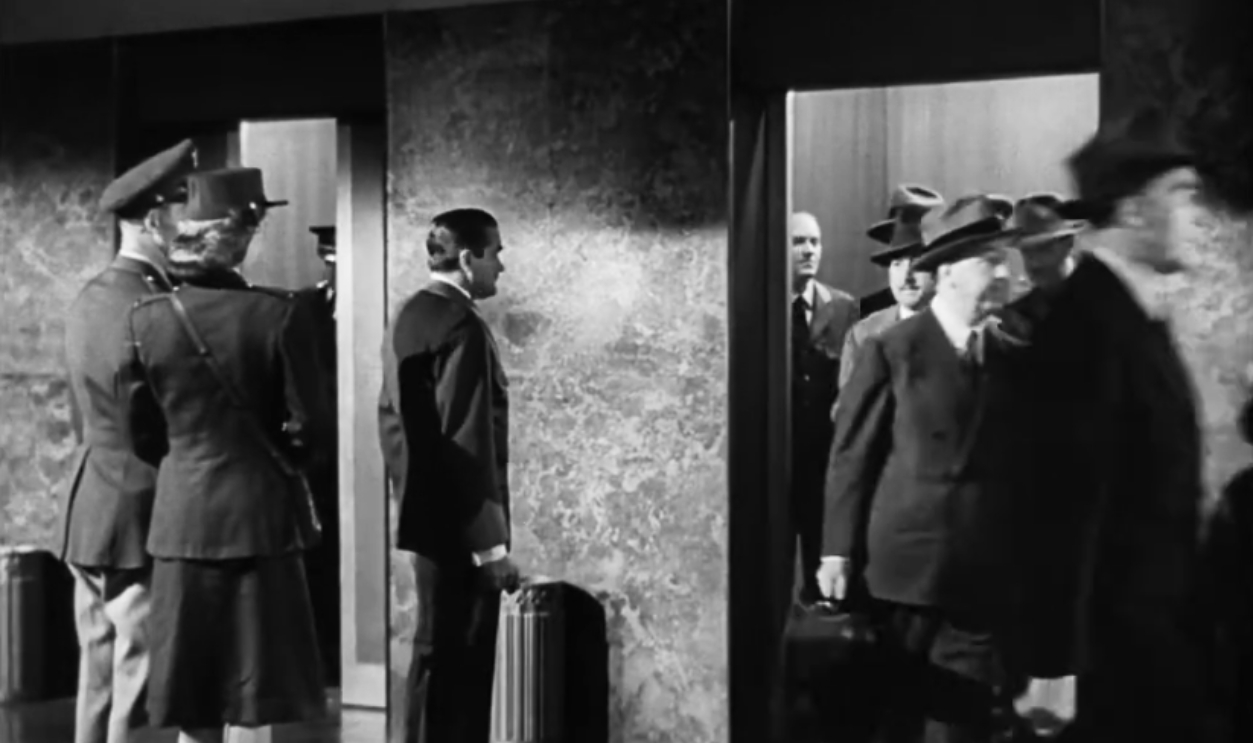 Every Alfred Hitchcock Cameo (with time stamps) by Daniel Cheetham
Every Alfred Hitchcock Cameo (with time stamps) by Daniel Cheetham
Sabotage (1936)
It’s fitting that in a film rooted in shadowy terrorism and moral uncertainty, Hitchcock chooses to appear as a nondescript member of a nighttime crowd. In Sabotage, he blends seamlessly with Londoners outside a cinema, his back to the audience, swallowed by the evening rush.
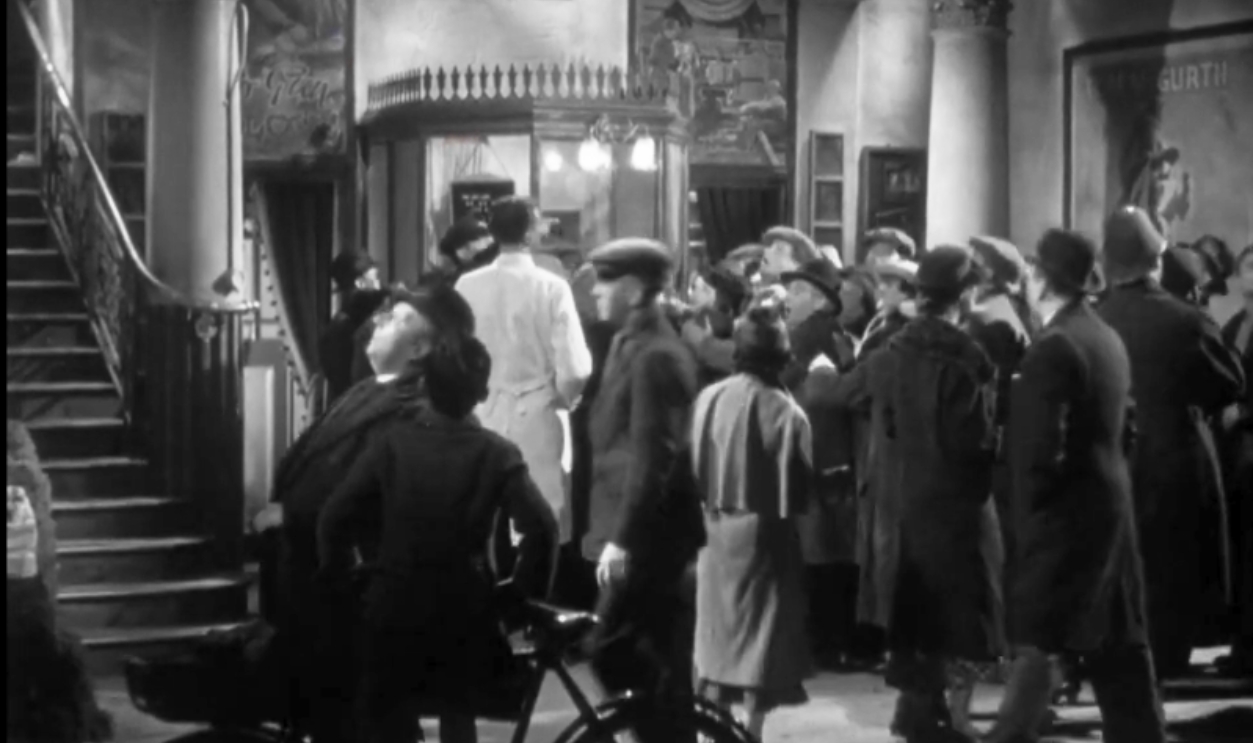 All ALFRED HITCHCOCK CAMEOS in his Movies by Adyfilk
All ALFRED HITCHCOCK CAMEOS in his Movies by Adyfilk
Sabotage (1936) (Cont.)
This scene is less about visibility and more about tone by reinforcing how danger and manipulation often hide in plain sight. The film’s theme of faceless threat finds eerie visual support in his shadowed presence. Hitchcock’s instinct to integrate himself so subtly proves his knack for mood-setting without distracting from narrative stakes.
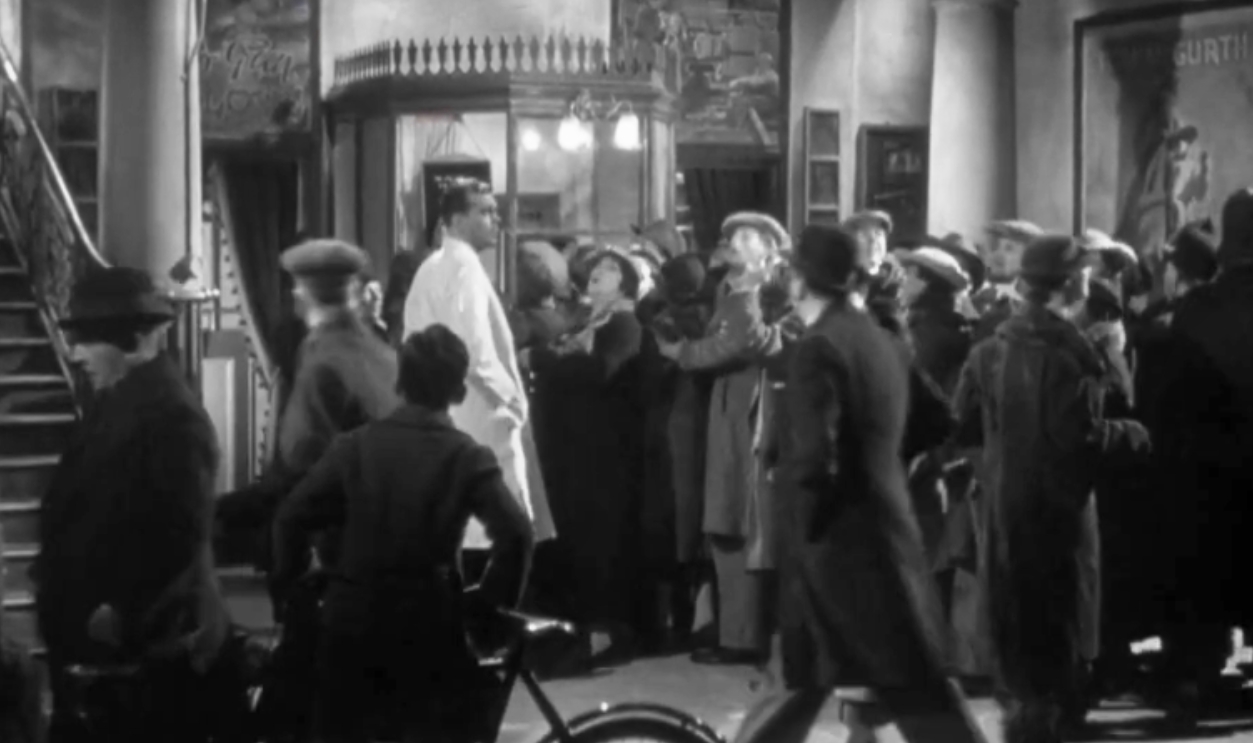 All ALFRED HITCHCOCK CAMEOS in his Movies by Adyfilk
All ALFRED HITCHCOCK CAMEOS in his Movies by Adyfilk
North By Northwest (1959)
Just as a bus door closes, Hitchcock hurries toward it only to be left behind. It’s a rare moment of playful frustration, placed just before the opening credits. The light tone masks what becomes a relentless chase narrative, and his missed ride hints at the film’s core motif: life derailed by chance.
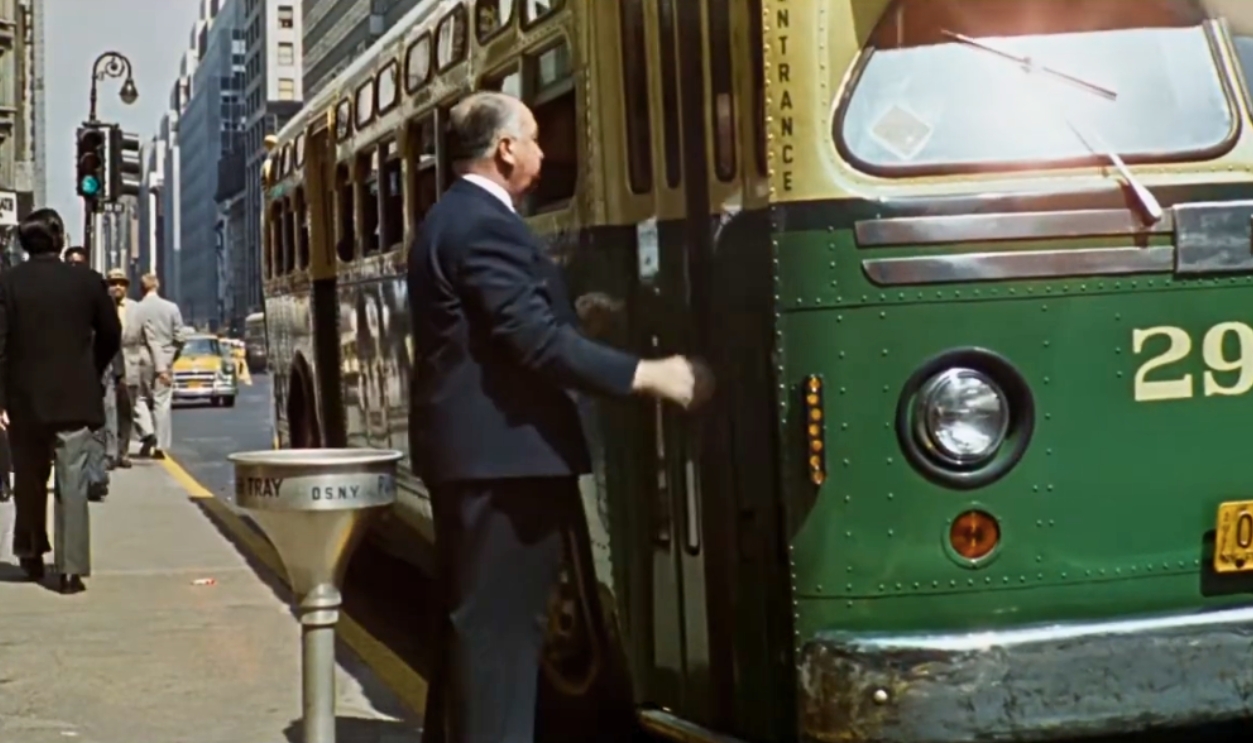 Every Alfred Hitchcock Cameo (with time stamps) by Daniel Cheetham
Every Alfred Hitchcock Cameo (with time stamps) by Daniel Cheetham
Number Seventeen (1932)
Brief but lively, Hitchcock's uncredited role in Number Seventeen finds him aboard a chaotic train sequence. He bounces among passengers, visible and animated. The film itself—a fast-paced crime caper—is often noted for its experimental energy. His presence mirrors the disorder and movement, which highlight the film’s tone in a single, blink-fast moment.
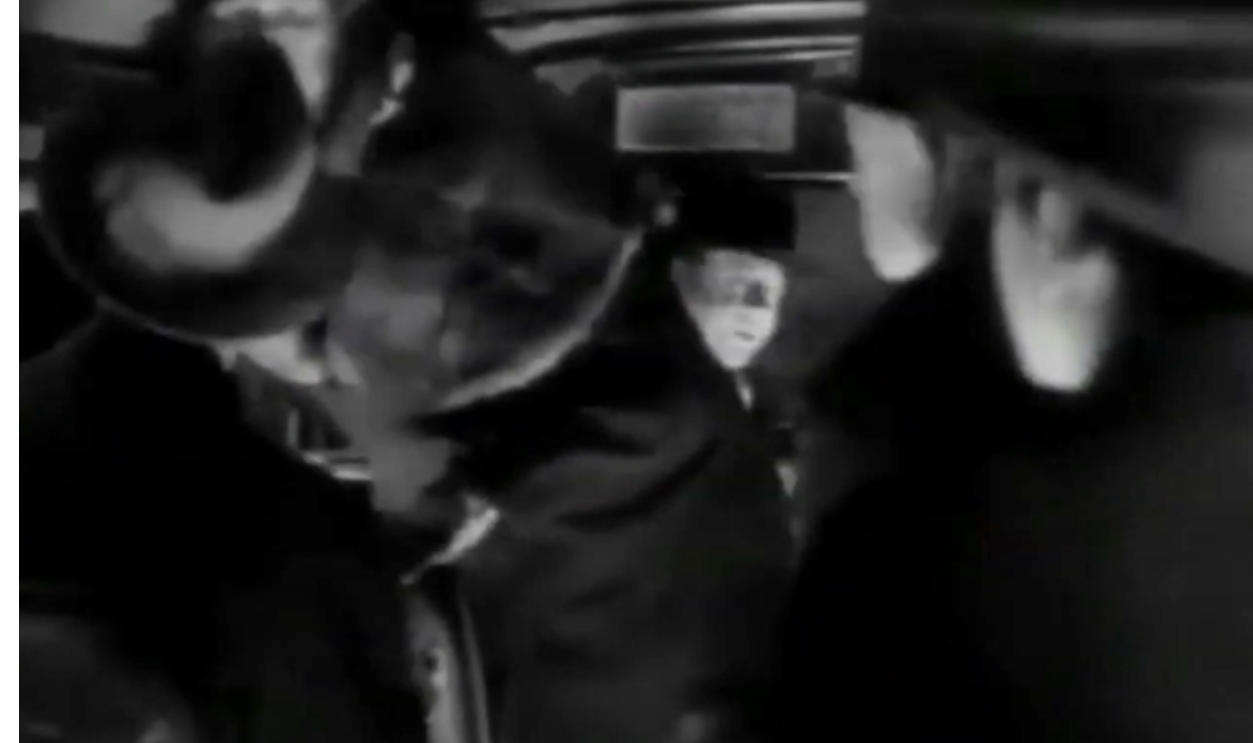 All ALFRED HITCHCOCK CAMEOS in his Movies by Adyfilk
All ALFRED HITCHCOCK CAMEOS in his Movies by Adyfilk
Rope (1948)
Hitchcock appears twice—first in a street-level neon sign’s silhouette, then again walking across the Manhattan skyline in a far window. These near-hidden Easter eggs match Rope’s experimental structure and confined setting. His ghostlike presence reflects the film’s themes of intellectual arrogance and violence hiding in polished, modern surroundings.
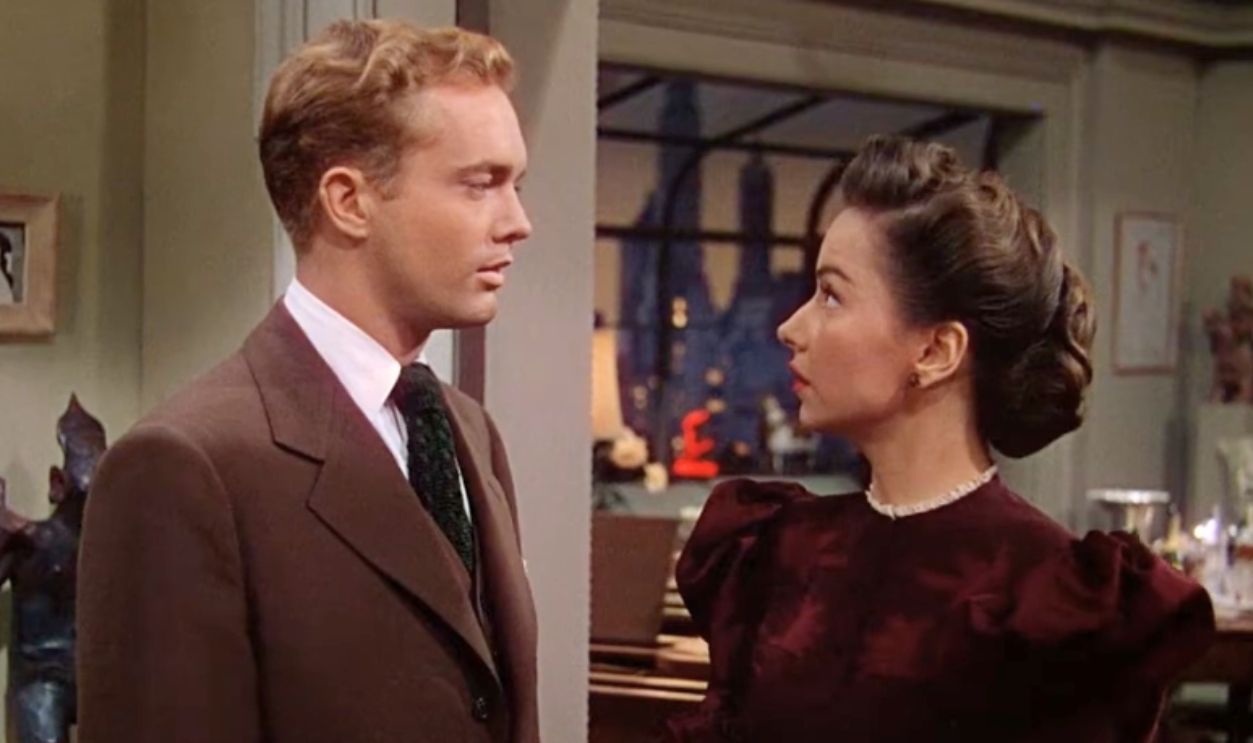 Every Alfred Hitchcock Cameo (with time stamps) by Daniel Cheetham
Every Alfred Hitchcock Cameo (with time stamps) by Daniel Cheetham
To Catch A Thief (1955)
Public transit becomes the stage for this elegant cameo. Hitchcock shares a bus bench with Cary Grant, sitting stone-faced as the protagonist shifts uneasily beside him. The moment is smooth, and highlights the film’s opulent French Riviera backdrop and its tension between criminal pasts and seductive misdirection.
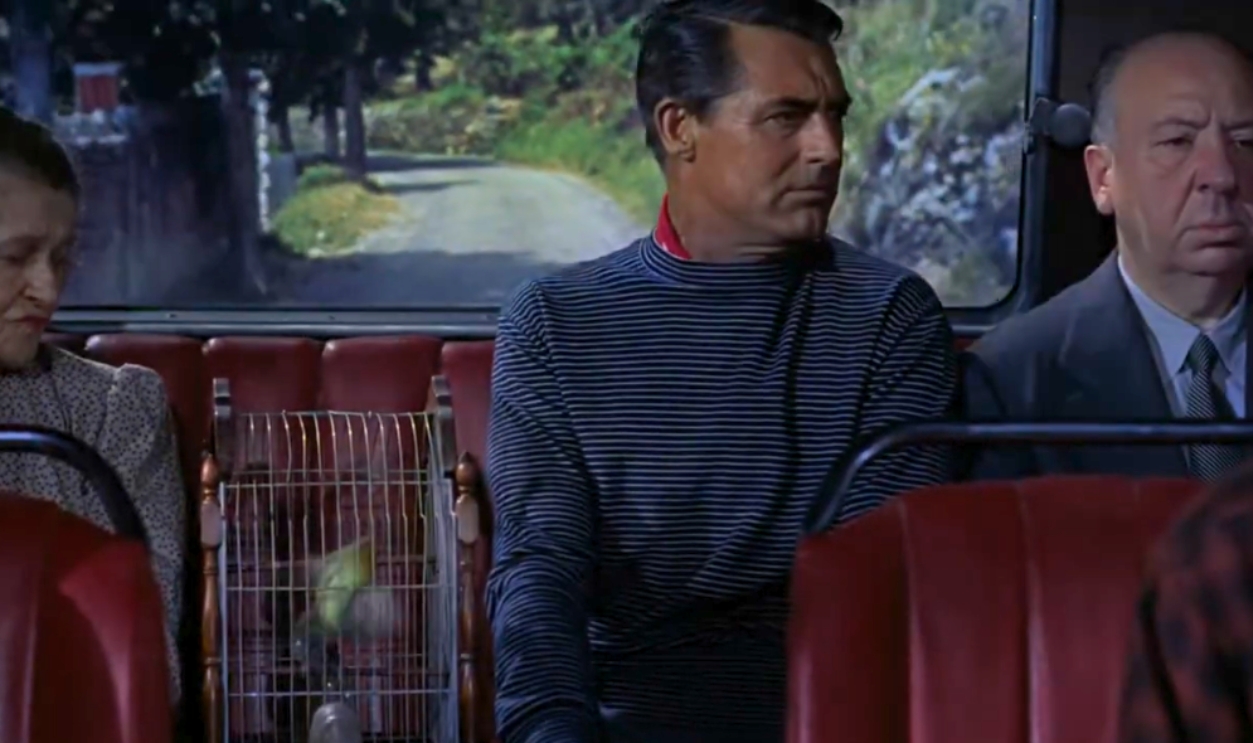 Every Alfred Hitchcock Cameo (with time stamps) by Daniel Cheetham
Every Alfred Hitchcock Cameo (with time stamps) by Daniel Cheetham
Family Plot (1976)
In his final cameo, Hitchcock is seen in silhouette, standing behind a frosted glass door at the registrar’s office. He never moves, never speaks—just a still outline as the visual restraint is deliberate. Family Plot mixes illusion and spiritual deception. Fittingly, his last appearance feels ghostlike, present, but already vanishing.
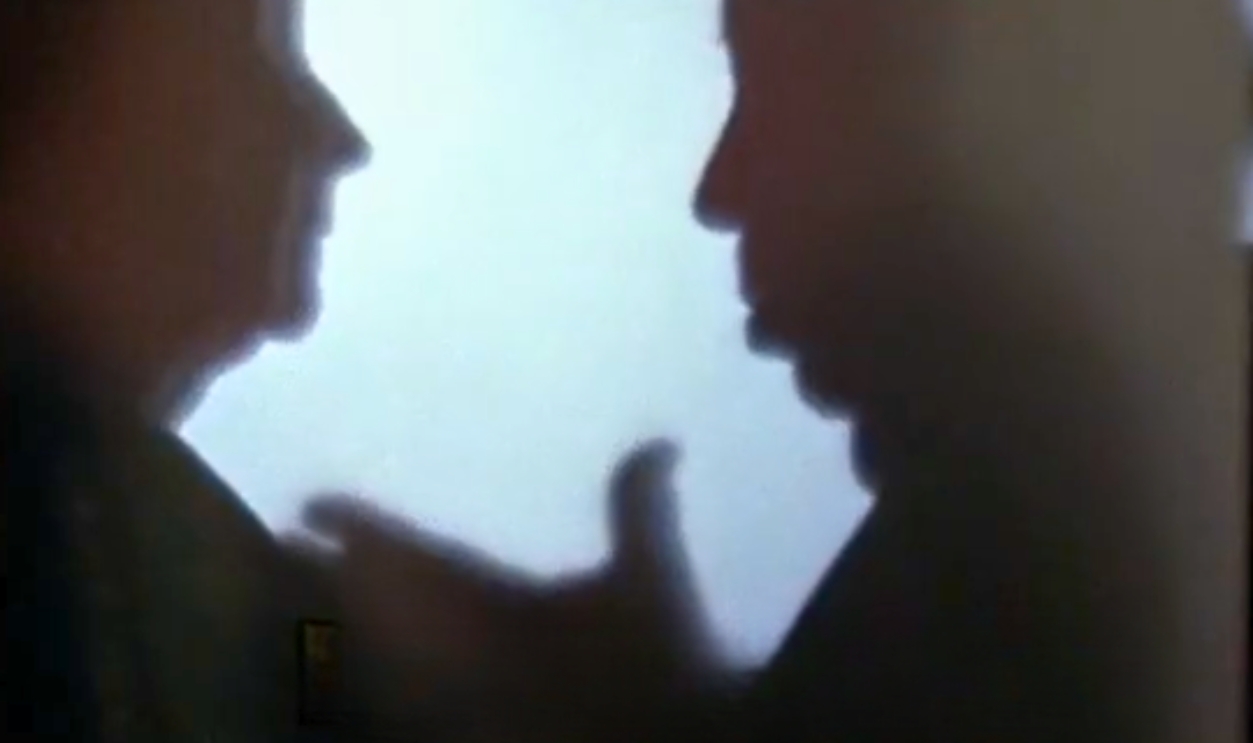 Every Alfred Hitchcock Cameo (with time stamps) by Daniel Cheetham
Every Alfred Hitchcock Cameo (with time stamps) by Daniel Cheetham
Under Capricorn (1949)
He’s seen in a Sydney street, crossing the courtyard in the background. In Under Capricorn, a colonial melodrama about scandal and repressed trauma, his placement is deliberate yet restrained. The spatial distance mirrors the film’s psychological remoteness, where internal struggles are veiled by propriety, and Hitchcock remains just out of reach.
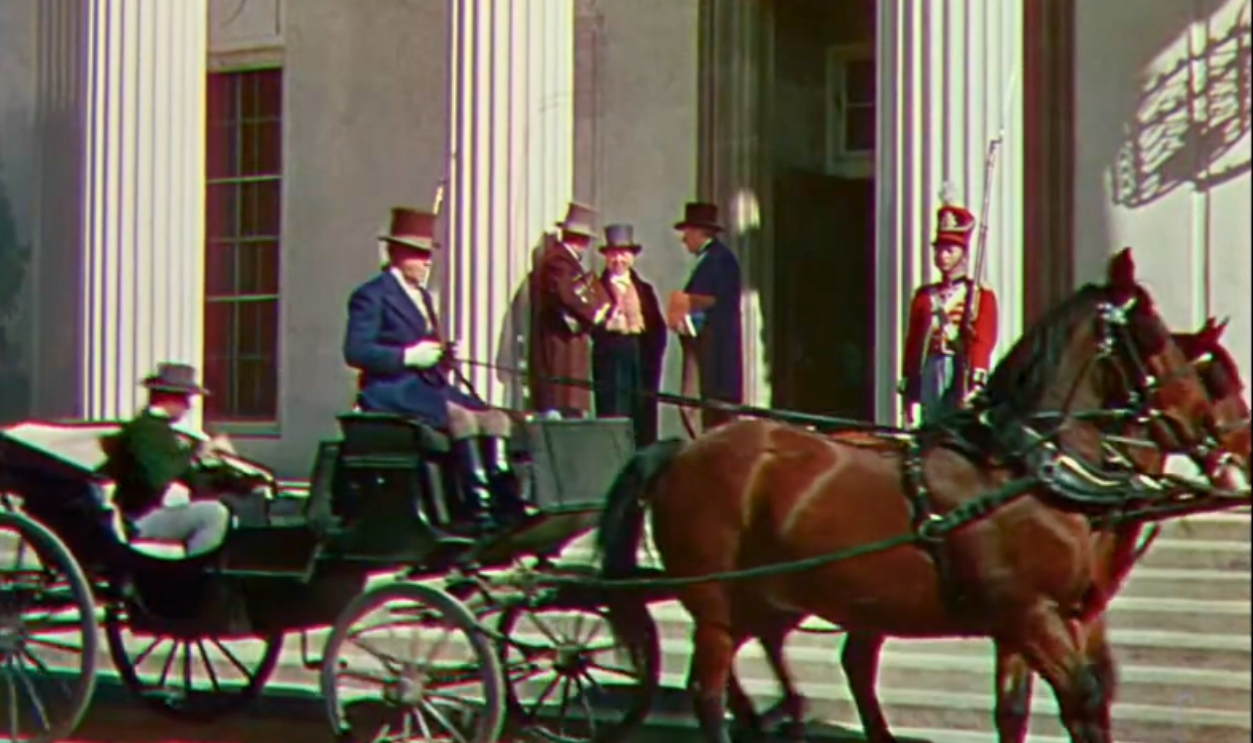 Every Alfred Hitchcock Cameo (with time stamps) by Daniel Cheetham
Every Alfred Hitchcock Cameo (with time stamps) by Daniel Cheetham
Rebecca (1940)
Hitchcock’s Oscar-winning American debut conceals him in the crowd outside the courtroom. It’s a brief, passing glimpse—consistent with the film’s ghostly mood. Rebecca is layered in psychological shadows, and Hitchcock’s near-invisible presence aligns perfectly with its themes of absence and a central figure who’s seen yet never present.
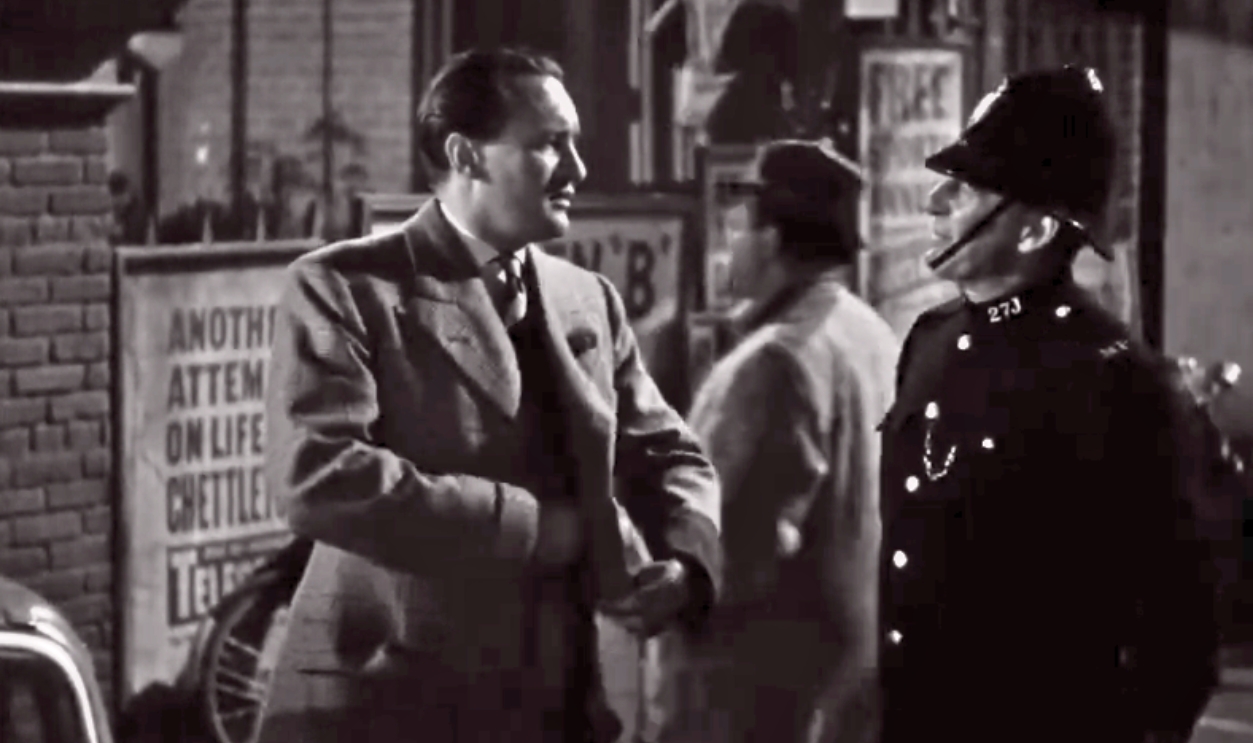 Every Alfred Hitchcock Cameo (with time stamps) by Daniel Cheetham
Every Alfred Hitchcock Cameo (with time stamps) by Daniel Cheetham
Notorious (1946)
As Ingrid Bergman leaves a Rio de Janeiro mansion, Hitchcock appears outside the party, where he’s sipping champagne. The placement is elegant and urbane, much like the film itself. This tale of love, espionage, and betrayal gets a director’s nod that feels socially embedded, and suggests he’s observing from within the very elite it critiques.
 Every Alfred Hitchcock Cameo (with time stamps) by Daniel Cheetham
Every Alfred Hitchcock Cameo (with time stamps) by Daniel Cheetham
Young And Innocent (1937)
Appearing as a press photographer outside a courthouse, Hitchcock takes on a role that feels almost autobiographical. In Young and Innocent, a wrongly accused man must clear his name, while Hitchcock—camera in hand—stands just outside the machinery of justice in a layered moment.
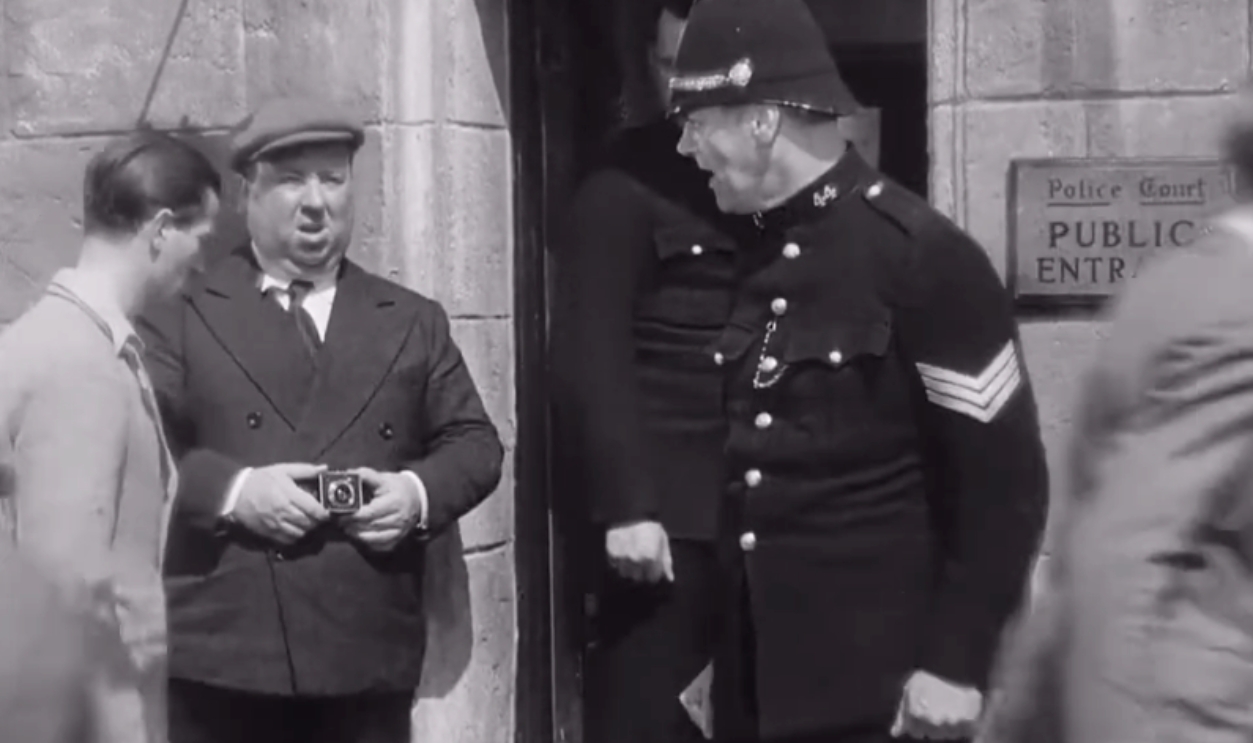 Every Alfred Hitchcock Cameo (with time stamps) by Daniel Cheetham
Every Alfred Hitchcock Cameo (with time stamps) by Daniel Cheetham
Young And Innocent (1937) (Cont.)
By placing himself among the press corps, he inserts himself into the very act of storytelling by capturing events as he constructs them. The choice resonates with the film’s central theme: the contrast between appearance and reality. His physical presence suggests that truth is always subject to who’s watching.
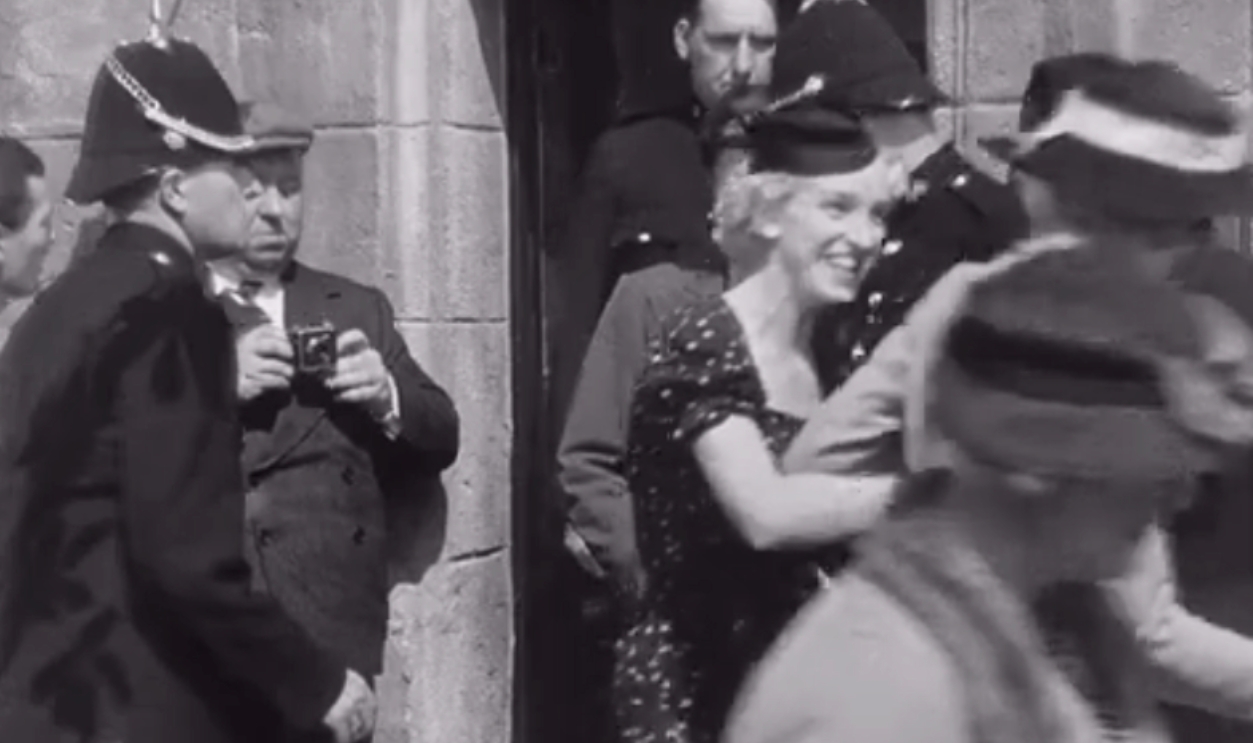 Every Alfred Hitchcock Cameo (with time stamps) by Daniel Cheetham
Every Alfred Hitchcock Cameo (with time stamps) by Daniel Cheetham
Torn Curtain (1966)
Minutes after the beginning, Hitchcock is seen in a hotel lobby with a baby. The music playing during his scene is an adaptation of "Funeral March of a Marionette," which was also the theme for his television series, "Alfred Hitchcock Presents”. Torn Curtain revolves around fractured communication and secret agendas.
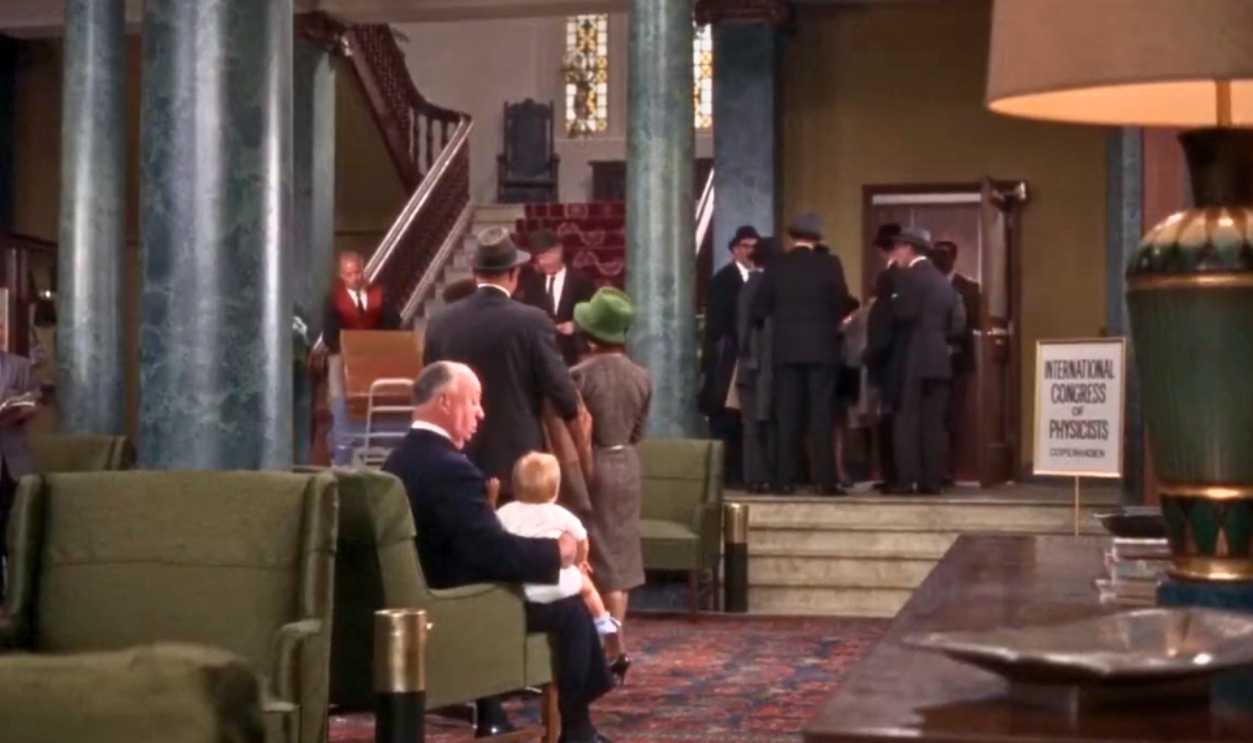 Every Alfred Hitchcock Cameo (with time stamps) by Daniel Cheetham
Every Alfred Hitchcock Cameo (with time stamps) by Daniel Cheetham
Mr And Mrs Smith (1941)
In this rare Hitchcock romantic comedy, he’s seen walking past Robert Montgomery on a New York City street. The appearance lasts just seconds but stands out because it’s his only foray into screwball comedy. His grounded, everyday presence offsets the film’s playfully chaotic tone and hints at normalcy amid emotional upheaval.
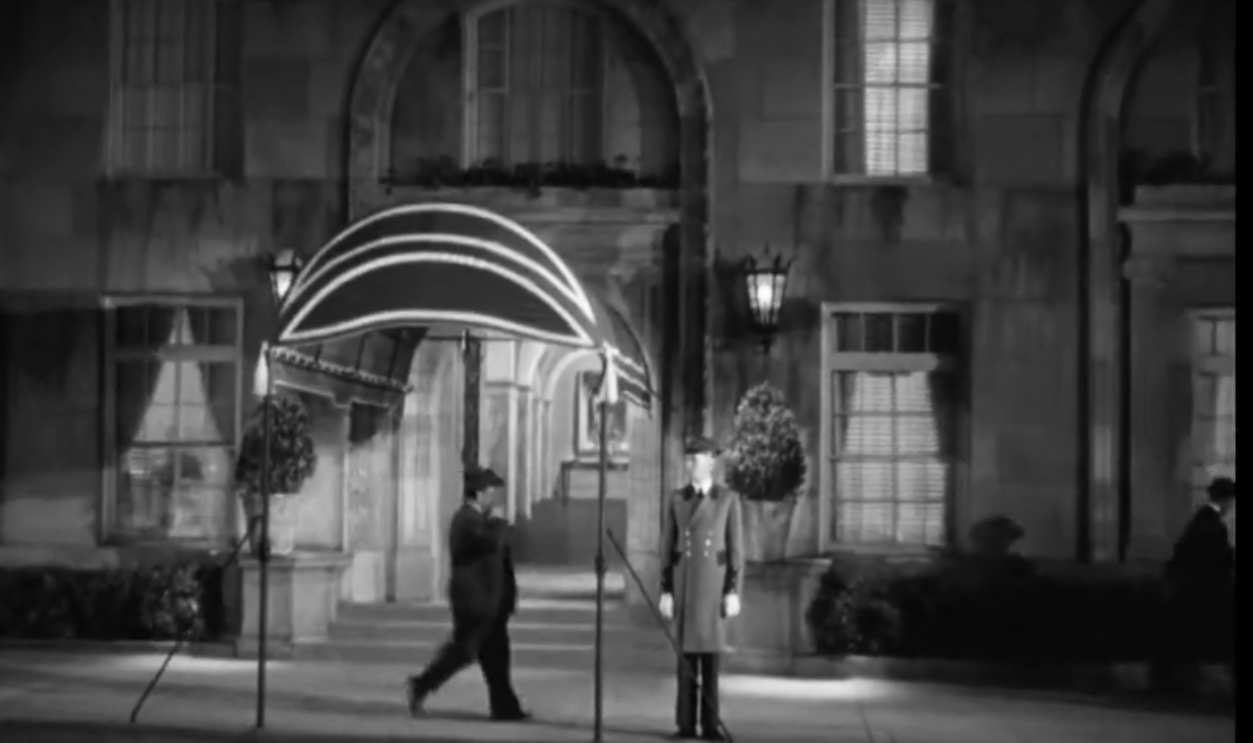 Every Alfred Hitchcock Cameo (with time stamps) by Daniel Cheetham
Every Alfred Hitchcock Cameo (with time stamps) by Daniel Cheetham
Topaz (1969)
He appears in an airport terminal, rising from a wheelchair, and the gesture softens his typically stoic figure. However, it doesn’t make sense at the beginning because a nurse is seen pushing the wheelchair. In a film about Cold War espionage and betrayal, the image feels symbolic: the truth might be hidden.
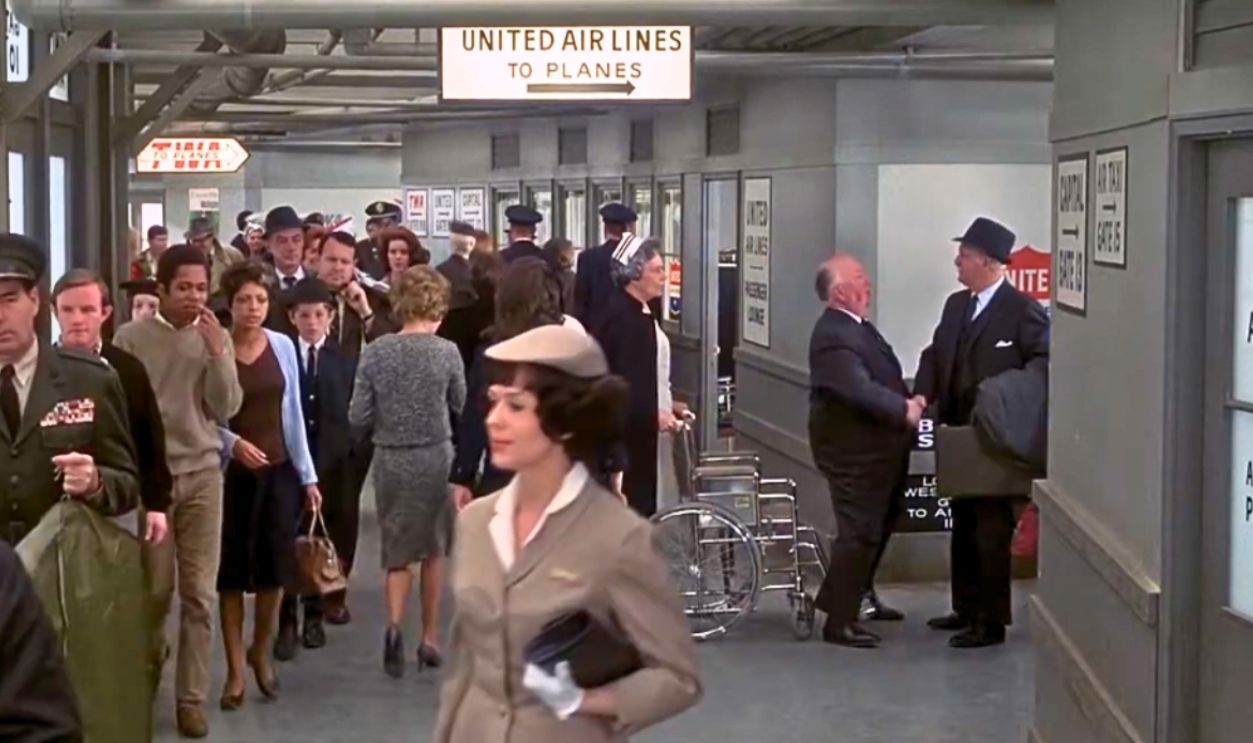 Every Alfred Hitchcock Cameo (with time stamps) by Daniel Cheetham
Every Alfred Hitchcock Cameo (with time stamps) by Daniel Cheetham
The Lady Vanishes (1938)
With a cool demeanor and a cigarette in hand, Hitchcock appears at the very end of The Lady Vanishes, standing near the platform at Victoria Station. It’s a satisfying Easter egg for observant viewers who’ve just followed a plot full of mistaken identities and optical illusions.
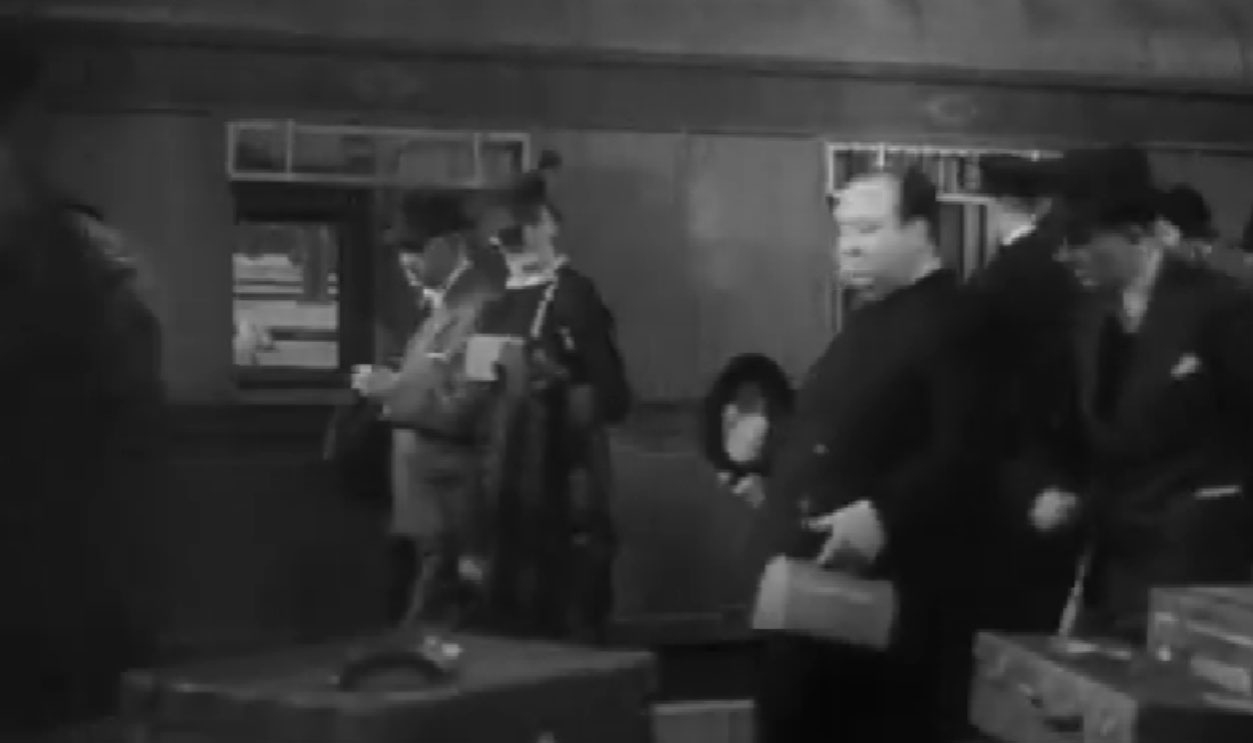 Every Alfred Hitchcock Cameo (with time stamps) by Daniel Cheetham
Every Alfred Hitchcock Cameo (with time stamps) by Daniel Cheetham
The Lady Vanishes (1938) (Cont.)
Unlike his earlier cameos, this one lingers just long enough to feel intentional. The station setting reinforces the film’s travel-heavy suspense, while his presence reminds us that in Hitchcock’s universe, nothing is ever fully resolved. Even the master of suspense likes to keep a few secrets for himself.
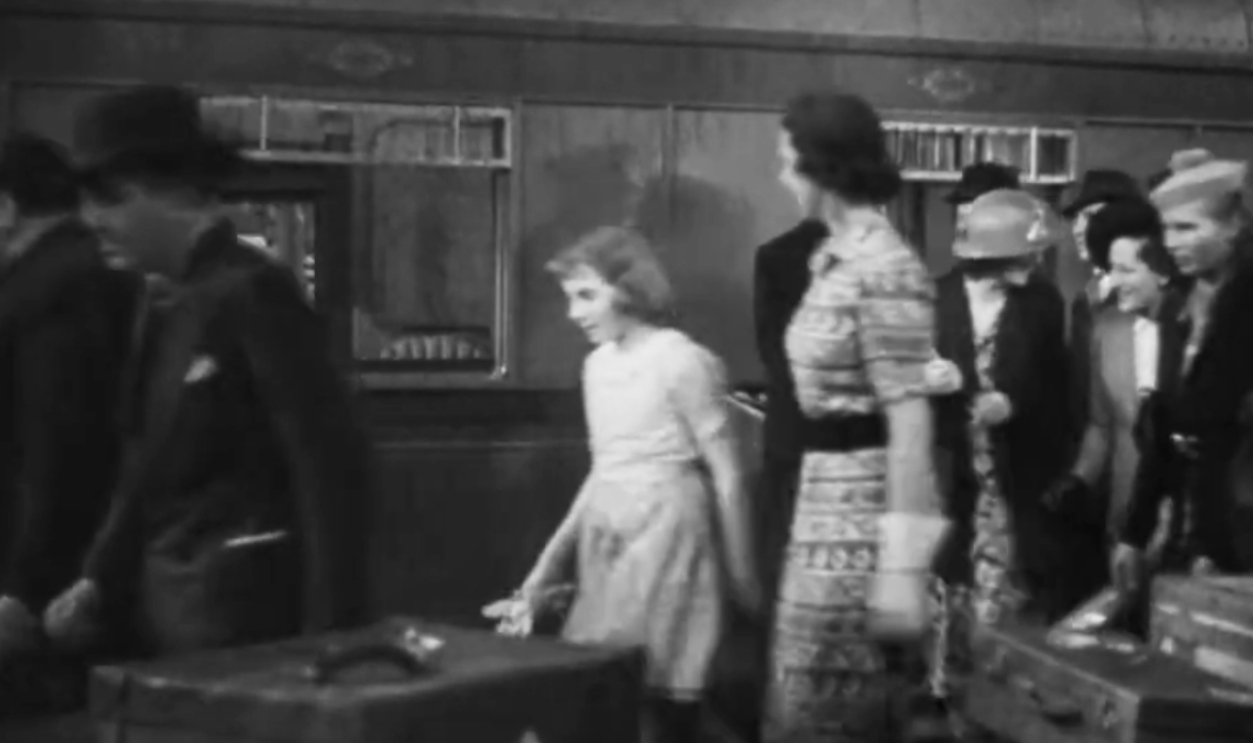 Every Alfred Hitchcock Cameo (with time stamps) by Daniel Cheetham
Every Alfred Hitchcock Cameo (with time stamps) by Daniel Cheetham
Frenzy (1972)
Hitchcock appears earlier in Frenzy, squeezed among a crowd of officials near London’s Thames Embankment. Dressed in a bowler hat and a dark suit, he listens as the public discusses the “Necktie Murderer”. The moment incorporates him into the city’s judgmental masses—an observer of gossip and flawed assumptions.
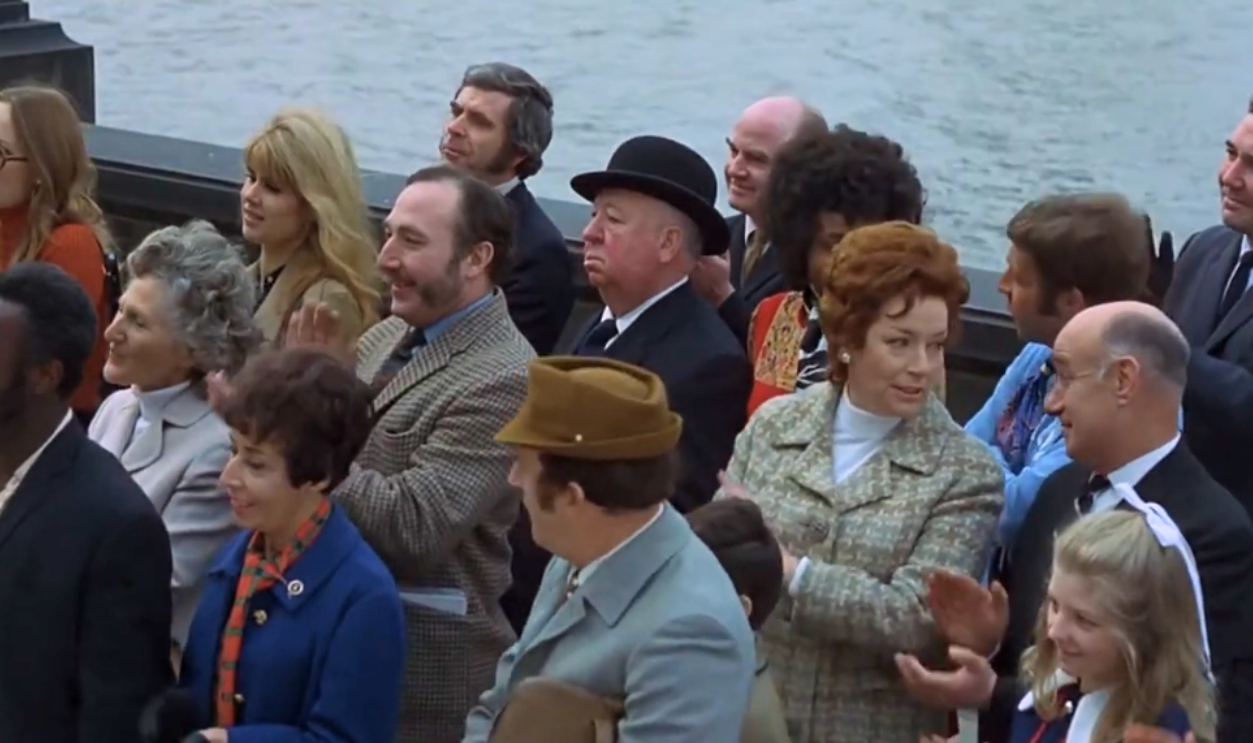 Every Alfred Hitchcock Cameo (with time stamps) by Daniel Cheetham
Every Alfred Hitchcock Cameo (with time stamps) by Daniel Cheetham
Frenzy (1972)—Second Appearance
Near a London pub, Hitchcock returns to admire a woman in the crowd before disappearing. Frenzy returns to his darker roots—strangulation, psychopathy, moral ambiguity. His cameo’s timing feels uncomfortably relevant. Set just before a murder, his gaze sheds light on the film’s question: can the viewer’s curiosity itself be complicit in violence?
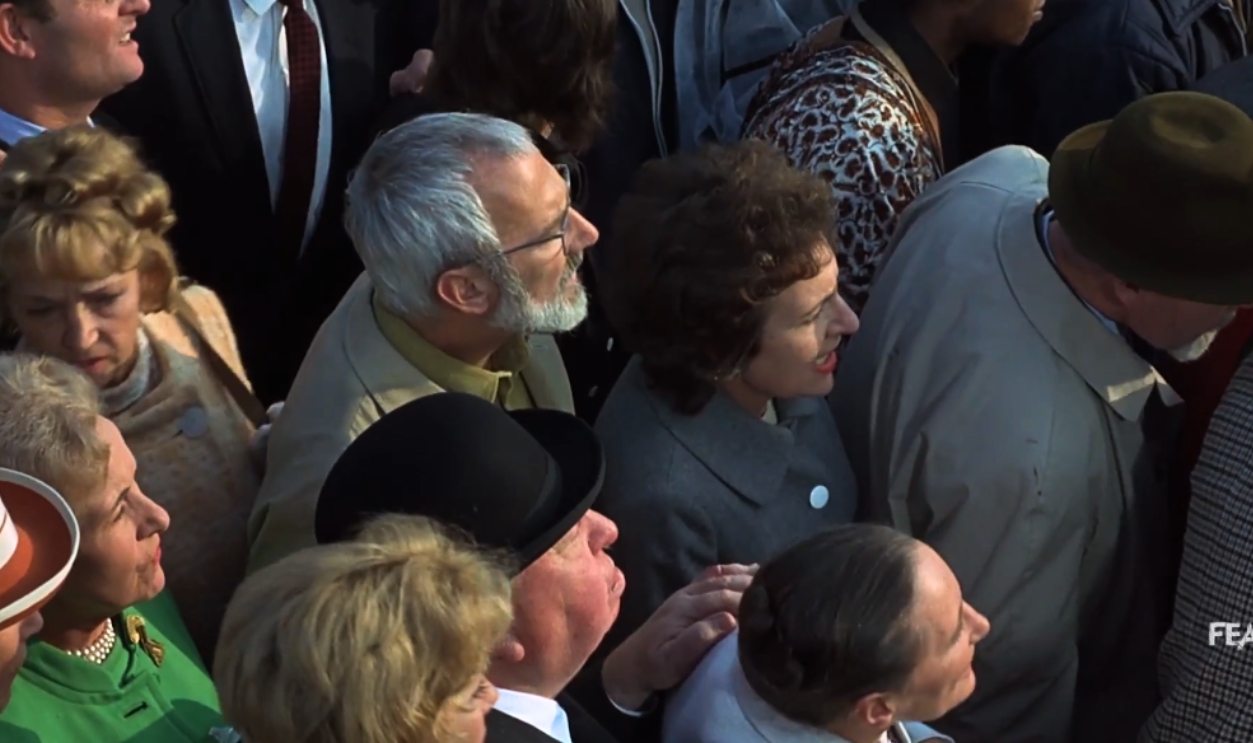 Body Floating On The River Thames (Opening Scene) | Frenzy (1972) by Fear: The Home Of Horror
Body Floating On The River Thames (Opening Scene) | Frenzy (1972) by Fear: The Home Of Horror
Suspicion (1941)
Hitchcock offers two blink-and-miss cameos here—first walking a horse and again mailing a letter. Suspicion explores the psychological meltdown of a woman who suspects her husband may kill her. The double cameo quietly mirrors the film’s duality: appearances versus intent and facts versus paranoid perception.
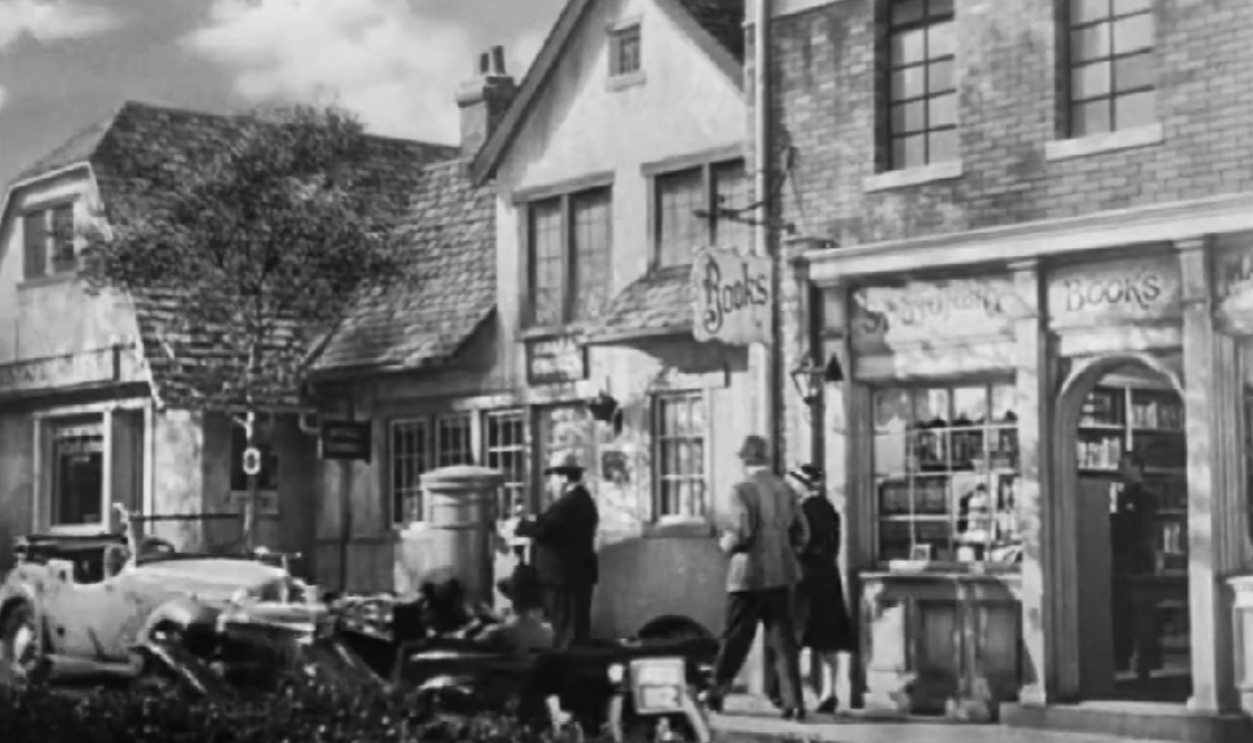 Every Alfred Hitchcock Cameo (with time stamps) by Daniel Cheetham
Every Alfred Hitchcock Cameo (with time stamps) by Daniel Cheetham
Saboteur (1942)
In Saboteur, Hitchcock is spotted in front of a drugstore. It lasts seconds, yet it’s part of a narrative about espionage and American ideals under threat. Nevertheless, a different cameo was planned, but it was later replaced. Hitchcock’s appearance among average citizens quietly grounds the film’s theme—that danger and heroism often wear everyday faces.
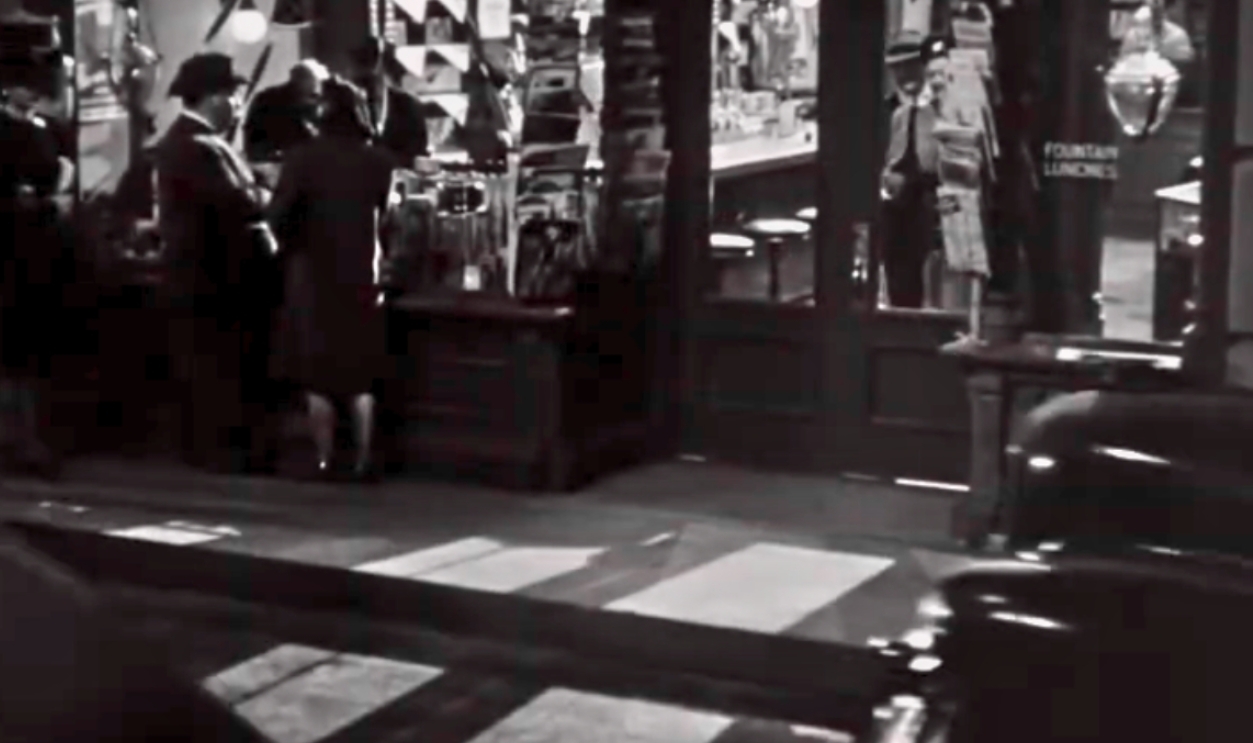 Every Alfred Hitchcock Cameo (with time stamps) by Daniel Cheetham
Every Alfred Hitchcock Cameo (with time stamps) by Daniel Cheetham

